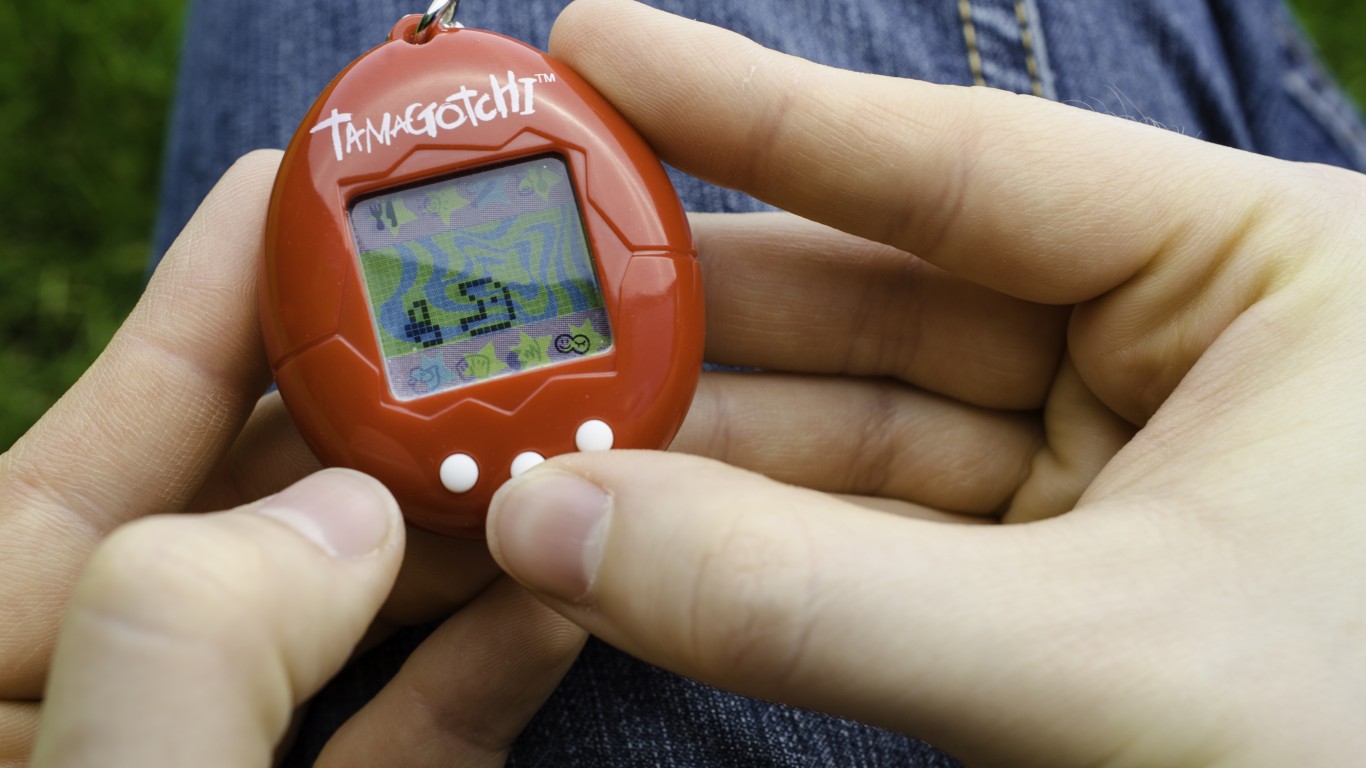
The American Psychological Association defines a fad as “an abrupt but short-lived change in the opinions, behaviors, or lifestyles of a large number of widely dispersed individuals.” Fads have existed within popular culture for many millennia.
To identify the biggest fads over the last century, 24/7 Tempo reviewed a wide range of online publications covering fitness, fashion, food, and popular culture. The advent of the internet and “viral” phenomena has spread fads faster but also often shortened their lifespan. While some fads from earlier decades are still around today, they are not nearly as much of a sensation as they were during the peak of their popularity.
When viewed in context, fads can illustrate aspects of society at the time they arose. Dance marathons of the 1930s were not simply a frivolous craze; They also offered momentary relief from the rigors of the Great Depression. 1920s Flapper culture, which symbolized freedoms of young women, reflected changes in womens’ voting rights and participation in the workforce. (See other examples of what life was like in the Roaring Twenties.)
Several of the biggest fads since 1920 that gained popularity in the United States came from other cultures or countries. The yo-yo reached America by way of a street game in the Philippines. The hacky sack had predecessors in Native American culture and in ancient China, and Japan. Troll dolls were originally from Denmark.
Click here to see the biggest fads of the last 100 years
Fads come in many forms, some are toys, fashion trends, dances, or exercise methods, and some recent fads center around the internet. Of the 60 famous fads on our list, 19 are associated with food or drink, 10 are toys, seven are in the fashion and beauty category, and three are related to exercise. (These are the most popular exercise fads every year since 1956.)
1920s: Flappers
Flappers arose at a time when women had just gained the right to vote, and participated in workforce efforts to support World War I. These young women were symbols of independence and freedom, unbound by social constraints of former generations, dancing to jazz in prohibition-era speakeasies in signature “flapper” dresses. While older generations regarded flappers negatively, modern history has painted them in a different light, as symbols of feminist power and a changing vision of womens’ involvement in politics, sexuality, and society.
[in-text-ad]

1920s: Fruit cocktails
After Prohibition went into effect on Jan. 17, 1920, what Americans had previously known as “cocktails” changed dramatically, and fruit cocktails became the new sweet fix, according to Sylvia Lovegren’s book “Fashionable Foods: Seven Decades of Food Fads.” These fruit cocktails were nothing like a can of Del Monte. Rather, imagine a cup of fresh fruit embellished with fluffy marshmallows or sprinkled with powdered sugar.
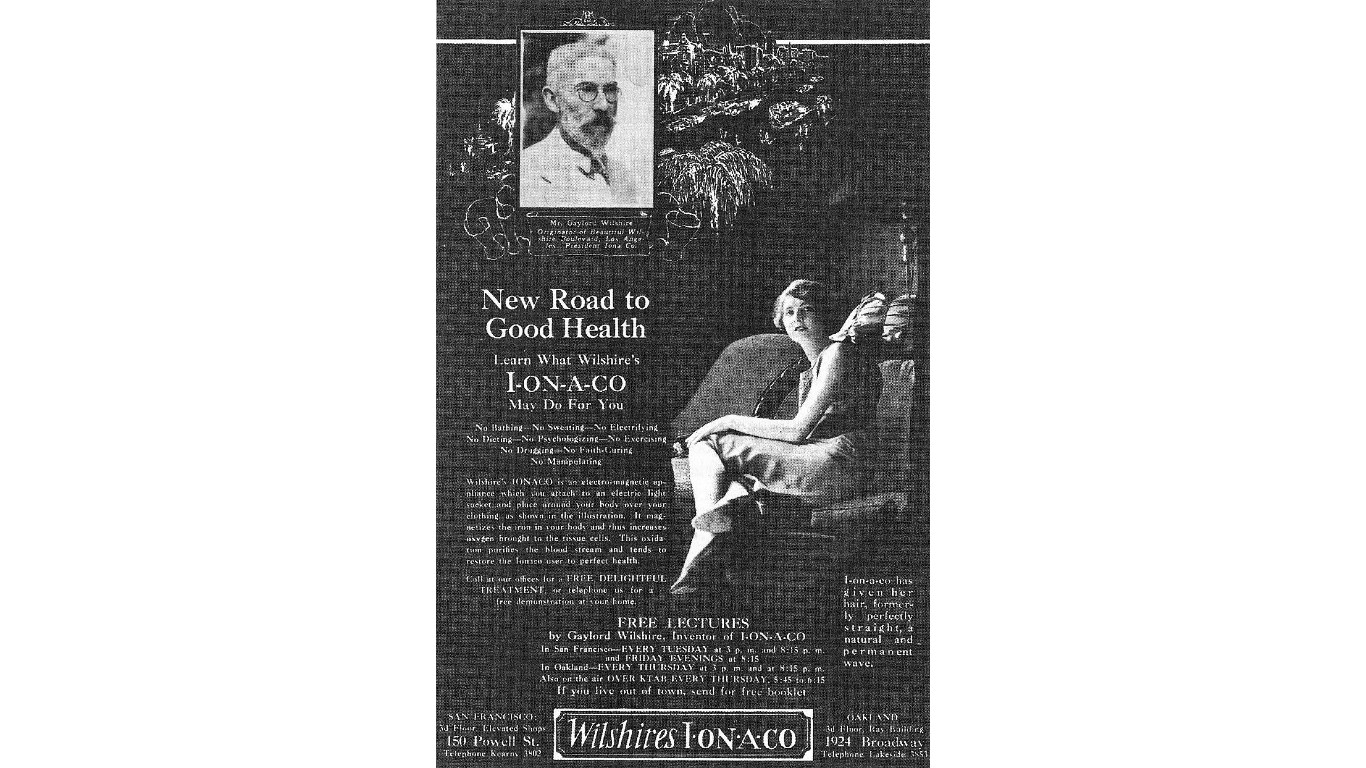
1926: The Ionaco
Part electric belt, part cure-all, the Ionaco was a device created by socialist politician and land developer Henry Wilshire. The Ionaco purportedly used electromagnetism to stimulate an increase of oxygen in the body in order to improve various health conditions. An investigation found that the device did not live up to its claims, and Wilshire was denounced as a quack by much of the medical community.

1929: The Duncan Yo-Yo
Donald Duncan was an American entrepreneur who is sometimes credited with inventing the yo-yo. In actuality, the yo-yo is an ancient toy. It’s depicted on a Greek vase from the fifth century B.C., and was popular in 18th- and 19th-century France and England. The term probably derives from Tagalog, Ilocano, or some other language of the Philippines, and the yo-yo first became popular in the U.S. after a Filipino immigrant started manufacturing the toy in California in 1928. Duncan bought his company the following year and altered the string mechanism, and his Duncan Toys Company sold millions of examples.
[in-text-ad-2]
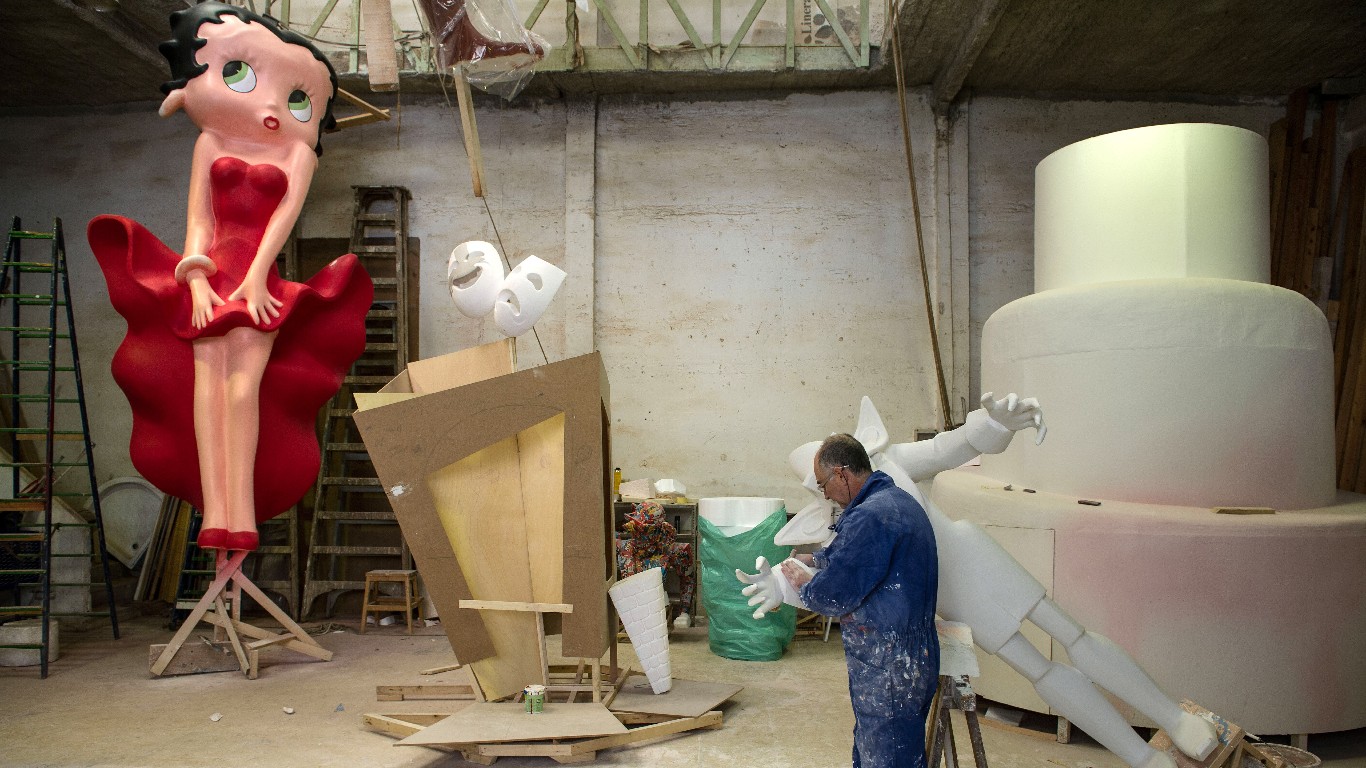
1930: Betty Boop
Betty Boop was an animated icon of flapper and jazz culture. She was the brainchild of creators Max and Dave Fleischer, who featured her in a cartoon short called “Dizzy Dishes” in 1930. With her trademark hoop earrings, short black dress, and dark curls, Betty Boop gained the love of audiences across the nation. Her style has evolved to reflect different beauty and style standards throughout the decades.

1930s: Dance marathons
The “hop until you drop” dance marathons of the Depression era – in which contestants paid an entry fee to dance non-stop, with the last-standing winners earning a cash prize – were more than just a source of entertainment. They also provided both participants and attendees with meals and shelter for the duration of the marathon, at a time when food and money were scarce.
[in-text-ad]
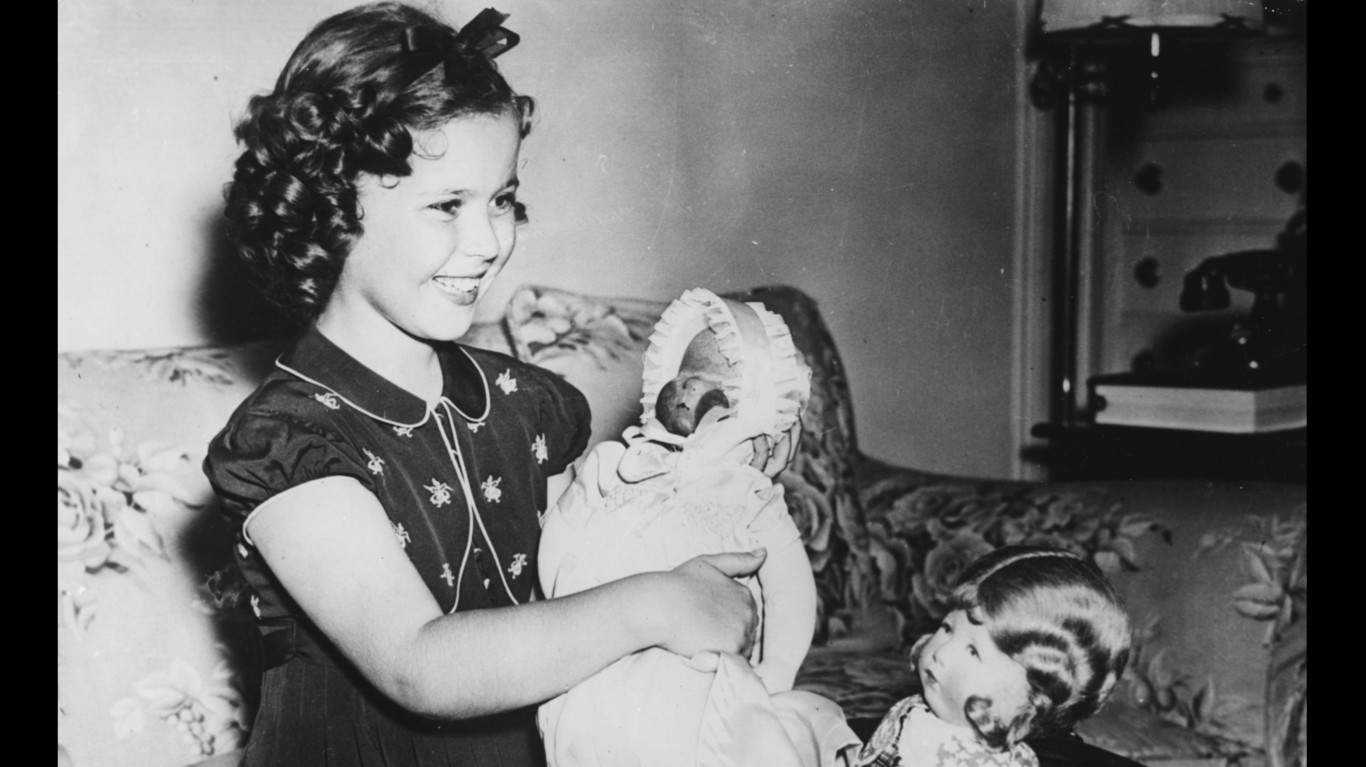
1934: Shirley Temple doll
Shirley Temple was a child actress who skyrocketed to the top of the box office in the 1930s. Known for her singing and dancing, she served as a symbol of hope when things were bleak for many Americans. Shirley Temple dolls, created in her likeness, accounted for nearly a third of all dolls sold at the time, generating millions of dollars in sales.

1930s: Mock apple pie
Like a lot of food items during the Great Depression, apples were expensive and could be hard to come by. There was an old tradition of making imitation fruit pies with cookies and crackers, and in 1934, Ritz Crackers debuted their recipe of mock apple pie – made with a filling or crushed crackers, lemon juice, vanilla syrup, and sugar. It actually ended up tasting not unlike a real apple pie, and was so popular that the recipe remained on Ritz boxes off and on until the early 1990s.
1940s: Tomato soup spice cake
A recipe for this unusual dessert appeared in an undated cookbook probably published in the late 1920s or early ’30s. Campbell’s first used tomato soup in a steamed, spiced pudding in October of 1940, and later used the soup as an ingredient in numerous cake variations. In 1949, a recipe appeared in the New York Times. While its popularity peaked in the 1940s, new versions of the cake are still being baked in Campbell’s test kitchens.
[in-text-ad-2]
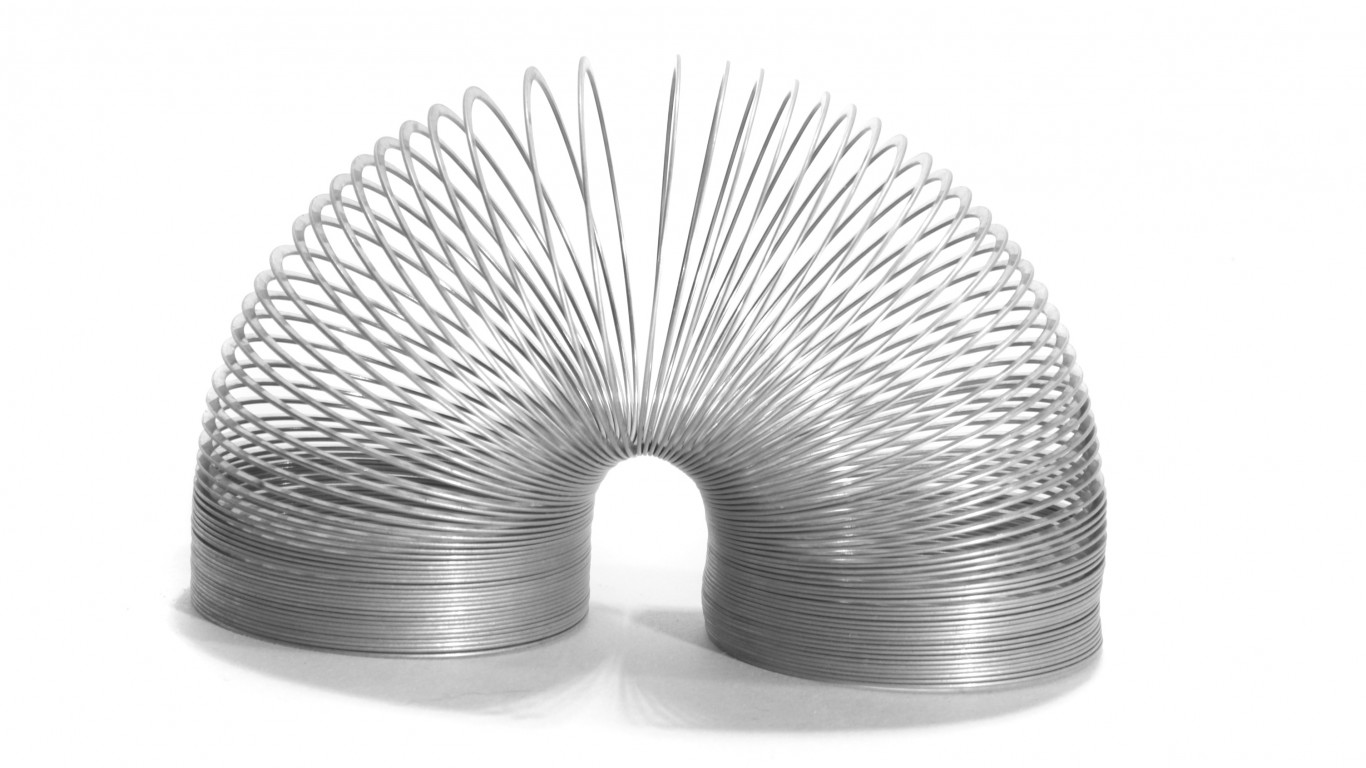
1945: Slinky
In 1943, inspired by a spring that appeared to “walk” when it was knocked off a shelf, naval mechanical engineer Richard T. James began developing the now-classic toy known as the Slinky. He began manufacturing it in 1944, but had trouble selling it until he arranged a demonstration in the toy department of Gimbels in Philadelphia. It impressed onlookers, and sold hundreds of units the same day. The Slinky went on to become one of the most recognizable toys in the country, with more than 300 million sold in its first 60 years.

1954-55: Davy Crockett
A five-episode 1954 miniseries on Walt Disney’s “Disneyland” and a film based on the series the following year propelled Davy Crockett to icon status in American culture. The real Davy Crockett was a frontiersman and politician who died while fighting at the Alamo in 1836, but his fictional incarnation became a folk hero to children across the country, who donned Crockett-inspired coonskin caps while imagining life on the frontier.
[in-text-ad]
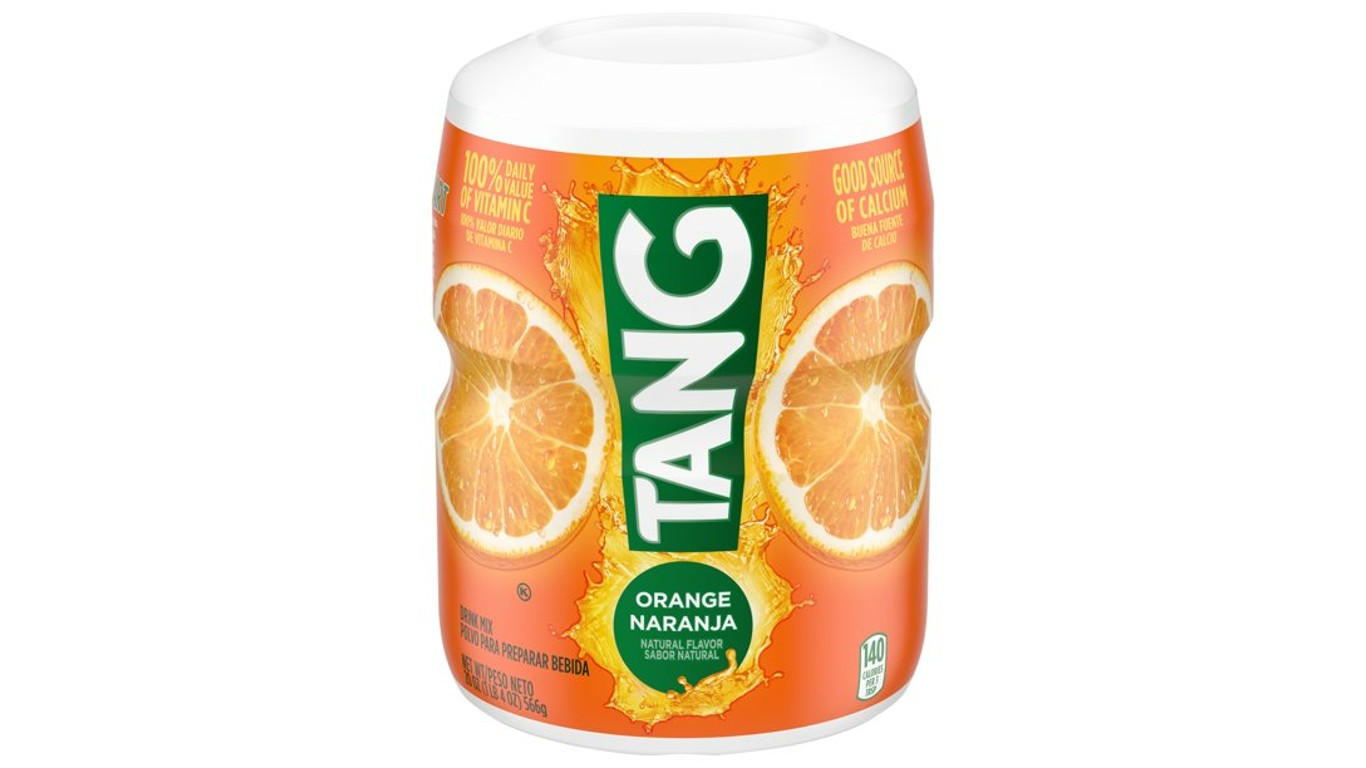
1950s: Tang
It’s a common misconception that Tang was originally made for astronauts. In fact, William A. Mitchell, a food scientist at General Foods Corporations, invented the powdered orange drink – originally marketed in 1959 as Tang Flavor Crystals. It didn’t gain much attraction until NASA realized that it could be used to add flavor to fluids consumed by astronauts. Its association with space flights spurred its popularity on earth.

1958: Hula Hoop
Hoops twirled around the waist have existed for at least 2500 years. The California-based toy company Wham-O – also known for the Frisbee – started making what a friend of the firms’ owners dubbed the Hula Hoop, in 1958 and it was an instant success. Originally marketed as a new fitness tool to tone the midsection, it sold an estimated 25 million units in its first four months.
1959: The Jack LaLanne Show
Jack LaLanne made his name as a fitness icon, performing astonishing feats of strength well into his 60s. He first came into the spotlight with “The Jack LaLanne Show,” a fitness program that was launched in 1951 on KGO-TV in San Francisco, and later syndicated for national broadcast, running from 1959 until 1985.
[in-text-ad-2]
1960: The Twist
The Mashed Potato, the Swim, and the Funky Chicken were all inspired by the 1960s dance craze called “The Twist.” The accompanying song was written and originally recorded by R&B pioneer Hank Ballard in 1958, but the version performed by Chubby Checker two years later became a smash hit and launched the dance craze. To do the Twist, dancers swiveled their hips with their front toe in place, and their arms out.
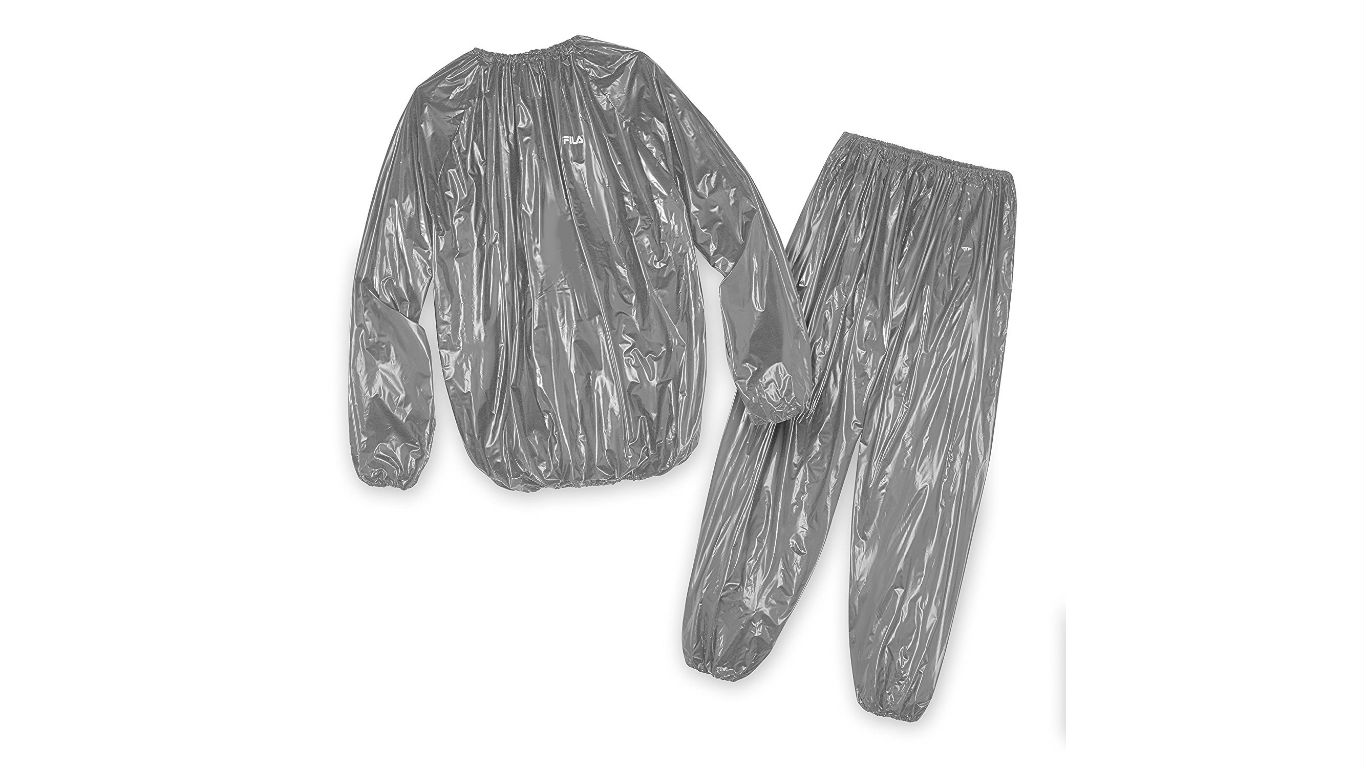
1966: Sauna suit
Sauna suits are one of many fitness items that promise to slim down users without workouts or diets. They simply make the wearer hot and sweaty and do not effectively help with weight loss, as any pounds lost through dehydration will come back once the user hydrates.
[in-text-ad]
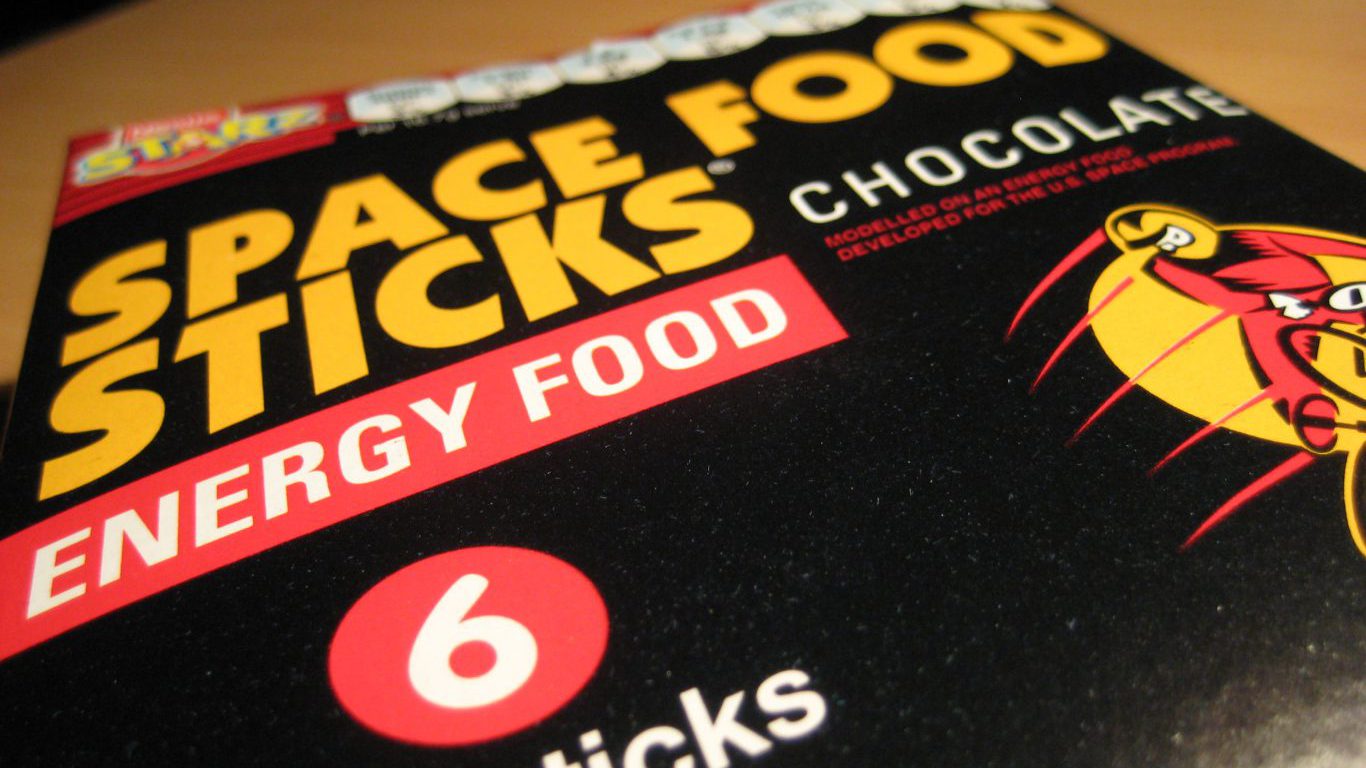
1960s: Space Food Sticks
Pillsbury designed these snacks for astronauts specifically, but they were released to the public before they made it into space. These slender, chocolate-covered cookie sticks were marketed as providing the body the perfect balance of the three macronutrients – carbohydrates, fat, and protein – and came in a variety of flavors including mint and orange. This fad plummeted by the 1970s because of fading interest in the space program, and disappeared entirely in the 1980s. They were brought back in 2006 by a different snack company, but are now gone again.

1967: Vibrating belts
In advertisements, the makers of vibrating belts promised their devices would jiggle a person’s belly, legs, or rear end and vibrate the fat away. The machines were popular in the 1950s and 1960s, but sales flopped when scientists found out that they did not actually help with weight loss or shrink down any parts of a person’s body.

1970s: Fondue
The 1970s was the decade of fondue. While you can still find places serving fondue today, it’s not nearly the craze it once was. When the fad was at its height, friends would get together and gather around a pot of creamy, gooey, melted cheese and dunk in chunks of bread on long, thin forks – or, in a variation, cook small pieces of meat in simmering oil in the same kind of pot. Of course, you wouldn’t have the full fondue experience without a proper dessert. Chunks of cake or fruit could be dunked into molten chocolate in a fondue pot, too.
[in-text-ad-2]
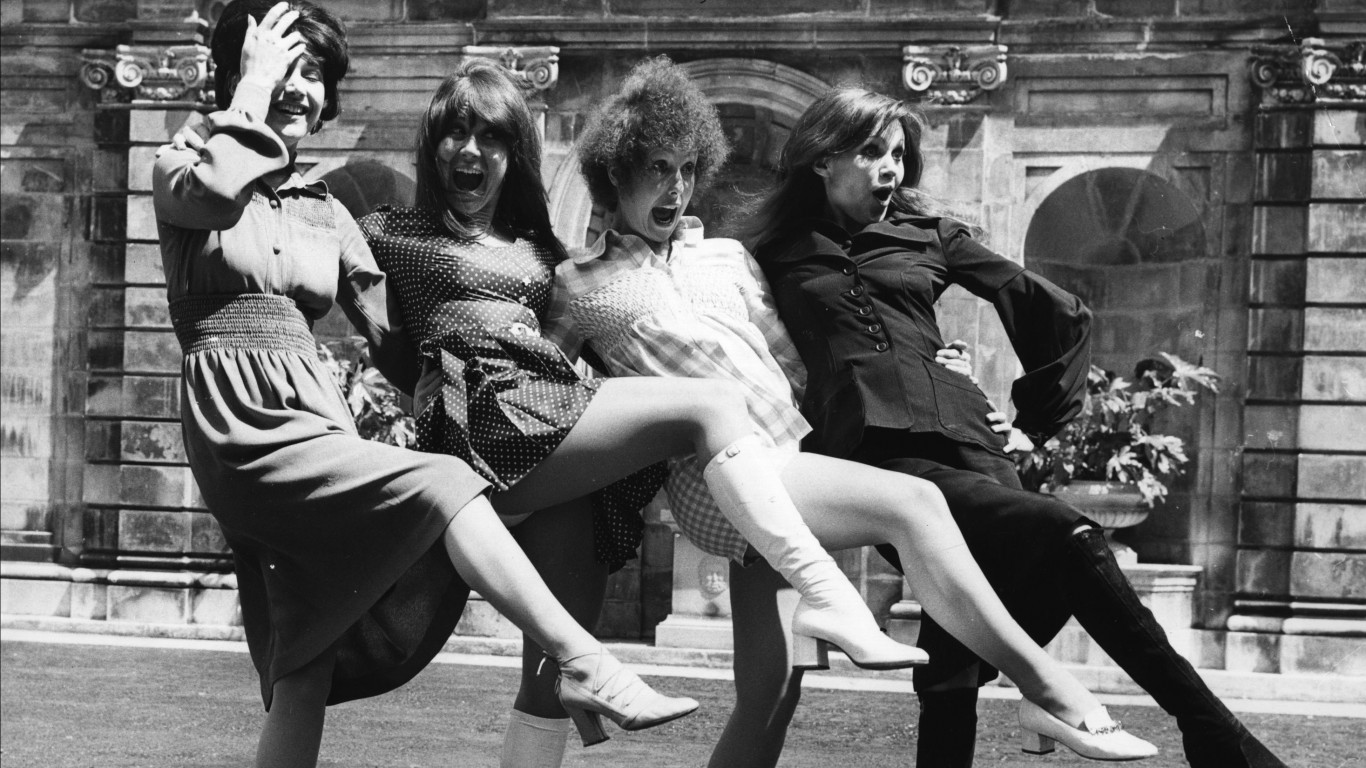
1975: Leg Beauty Kit
The Leg Beauty Kit was one of the earliest examples of a widely popular fitness product using rubber resistance bands. The kit was marketed to women as an inexpensive way to slim and tone their legs.
1970s: Mopeds
Though mopeds were around for years prior, the motorbike-bicycle combo gained popularity during the 1970s. Manufacturers altered the moped so that it would adhere to new laws, allowing teenagers over the age of 16 to ride. Some of the top classic mopeds include the Suzuki AP50 and the Honda SS50.
[in-text-ad]
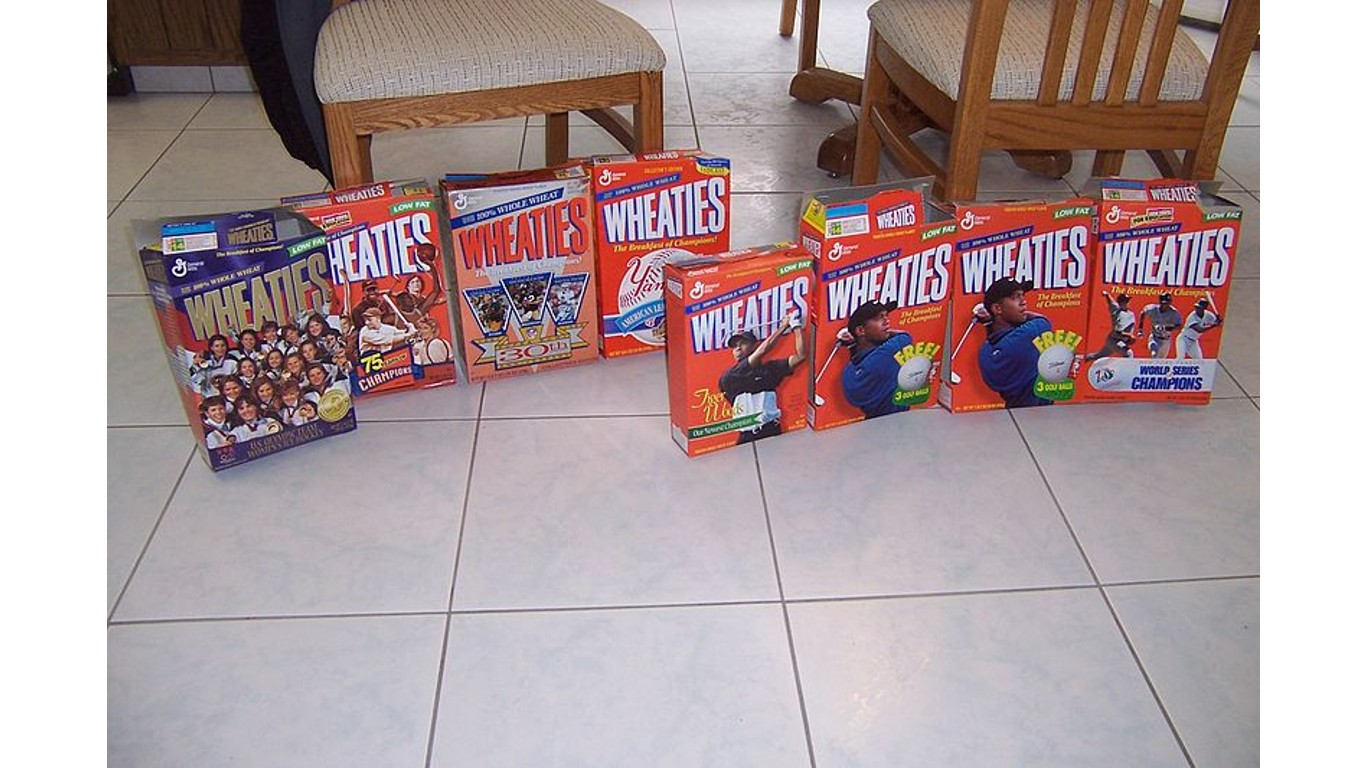
1980s: Sugary celebrity cereal
Can you imagine seeing Beyoncé on the front of a Cheerios cereal box? Had she been a world-renowned singer and songwriter in the 80s, that wouldn’t have been impossible. Cartoon, movie, and television show characters could all be seen on the front of their own cereal boxes – everything from Smurf Berry Crunch to Mr. T Cereal. The latter, by the way, was a sweet corn and oat cereal shaped into small T’s. The flavor was reportedly pretty standard, but the catchphrases “I pity the fool who don’t eat my cereal” enticed consumers young and old

1984: Jazzercise
There may be nothing more quintessentially ’80s than Jazzercise. The workout combined bright leotards and upbeat dance music with aerobic exercise. The VHS tapes sold well after Jazzercise was featured at the 1984 Olympic Games in Los Angeles.
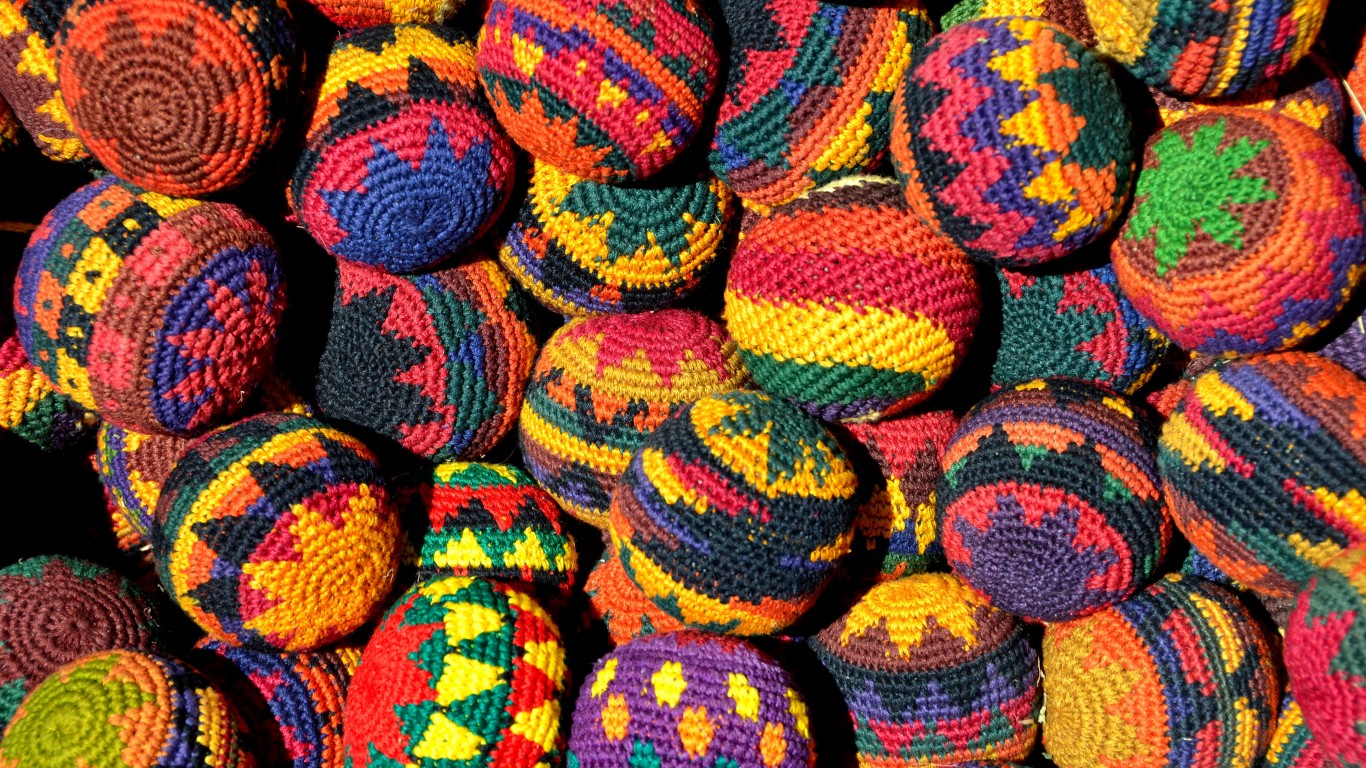
1980s: Hacky Sack
Few objects are as symbolic of counterculture as the Hacky Sack. The game centers around keeping a small bean bag – called a footbag – from hitting the ground, using various parts of the body. It is similar to games known in ancient China and Japan and in Native American culture. The modern-day Hacky Sack was invented in 1972 in Oregon by John Stalberger and Mike Marshall, but became a national craze only in the following decade.
[in-text-ad-2]
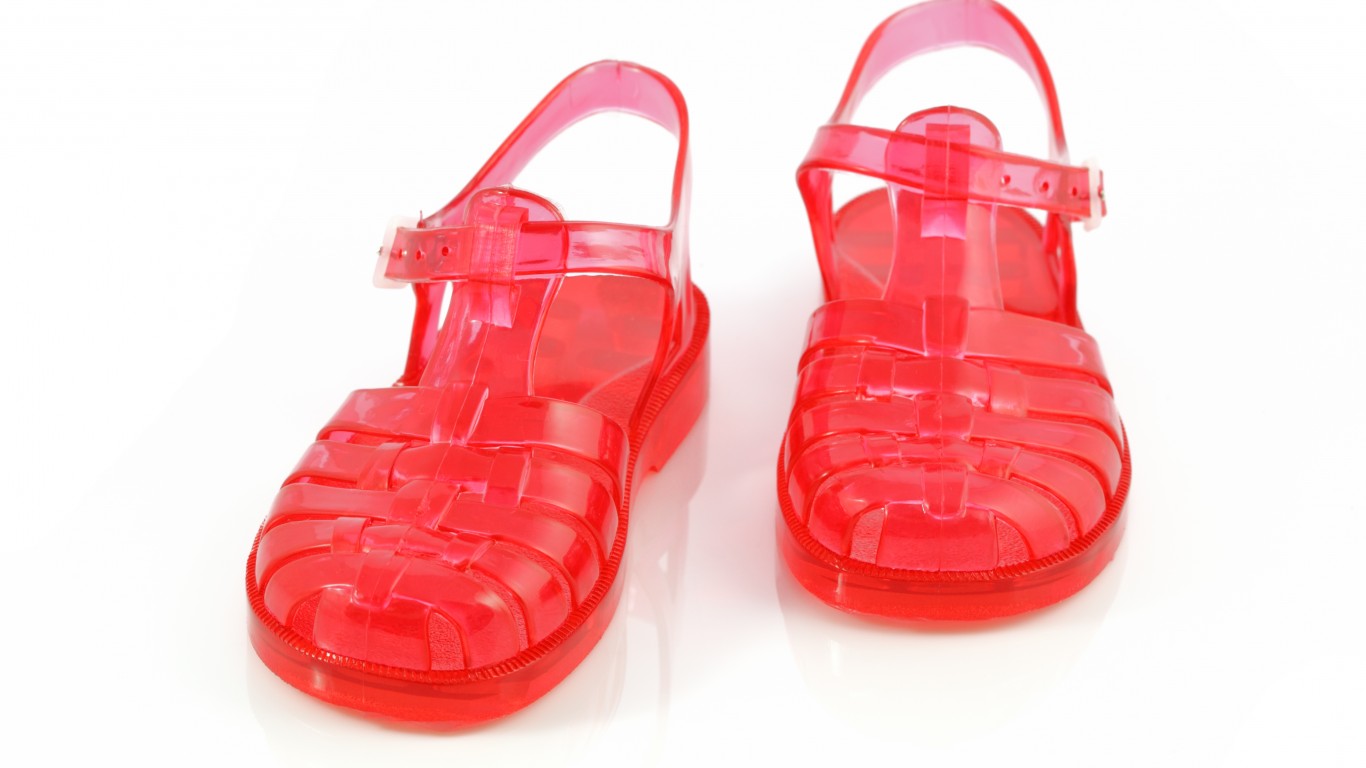
1980s: Jelly shoes
Before there were Crocs, there were Jelly shoes. The colorful footwear, crafted from PVC plastic, emerged in Europe decades before coming to the U.S. The shoes were introduced to the American market as a high fashion item in the 1980s, and gained traction across the country among adults and children alike.

1980s: Koosh Balls
Scott Stillinger wanted to teach his children how to catch, but struggled to find a ball that was soft and easy to grasp. His solution was the invention of the Koosh ball, a soft, non-bouncing ball that came in multiple colors with fuzzy rubber spikes. The ball and its many iterations sold in thousands of stores and topped “fastest-selling toy” lists in the 1980s.
[in-text-ad]
1988: Sweatin’ to the Oldies
Richard Simmons may not look like the typical fitness expert, but his “Sweatin’ to the Oldies” videos are a certified phenomenon. Simmons led upbeat aerobic exercises to classic pop music hits. The video series reportedly sold over 20 million copies.

1980s: Rubik’s Cube
Originally called the “Magic Cube” by its creator, Hungarian architect Ernő Rubik, the Rubik’s Cube was a puzzler’s delight. The Cube required players to align the cube such that each face had nine squares of the same color. The game was a massive success, quickly earning a place as one of the most popular puzzles in history.

1989: Game Boy
Decades before smartphones, the Game Boy brought portable gaming into the hands of consumers. The 8-bit handheld console was first released in Japan in 1989, allowing gamers to play games like Super Mario Land. By July of ’89, the Game Boy had made its way to the United States. In the U.S., the game Tetris was combined with the Game Boy system, leading to the sale of 35 million copies.
[in-text-ad-2]
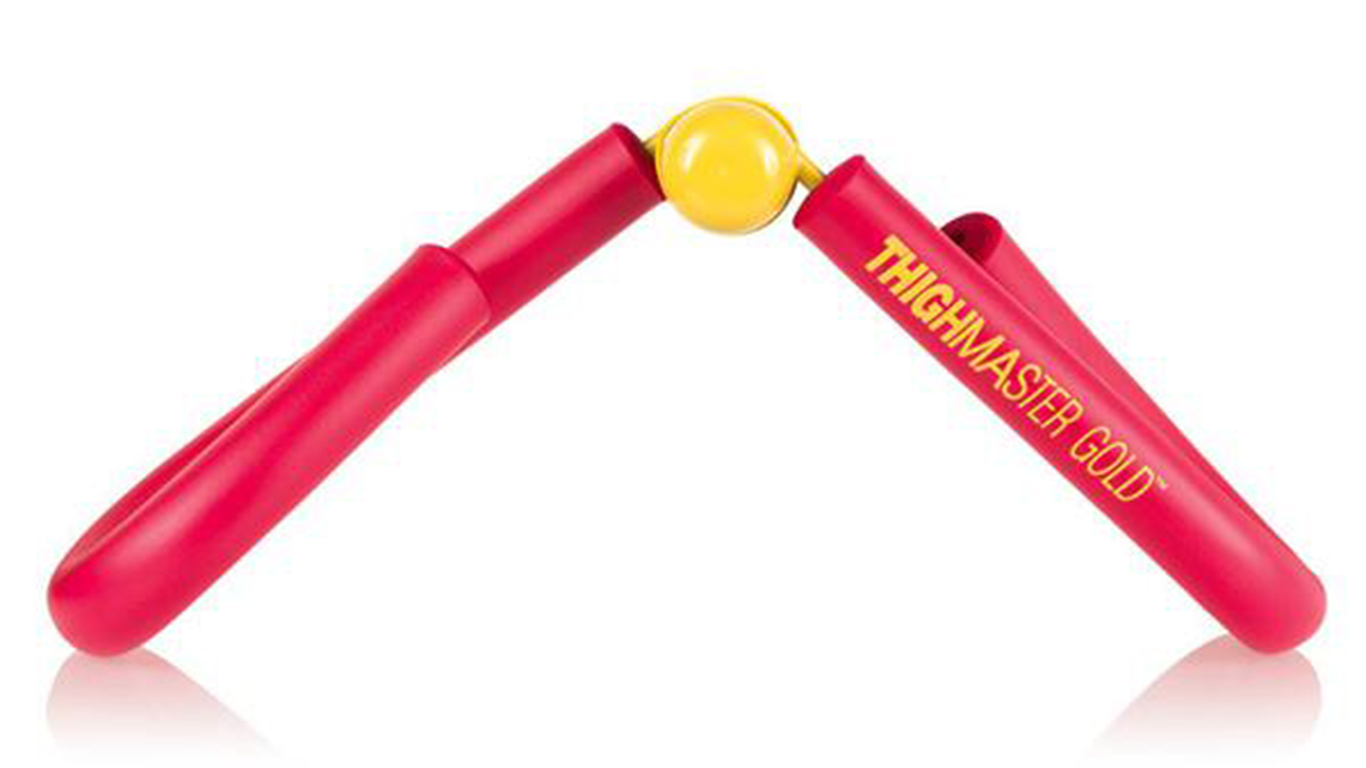
1990: ThighMaster
The ThighMaster proved the power of the infomercial. The simple tool was designed to tone and firm the thighs and legs through a series of simple exercises. The ThighMaster made over $100 million, largely thanks to spokesperson Suzanne Somers.

1990s: Juicing
Juicing – forgoing solid food and drinking only fruit and vegetable juices for days or even weeks at a time – is said to promote weight loss and to “detox” the system (the regimen is sometimes called a “juice cleanse”). Many brands of detox-appropriate juice are sold commercially, but those who prefer to concoct their own can buy a pricey home juicer. Some studies question the supposed health benefits of juicing, but that hasn’t stopped such marquee names as Blake Lively, Colin Farrell, Salma Hayek, and Gwyneth Paltrow from embracing the trend.
[in-text-ad]
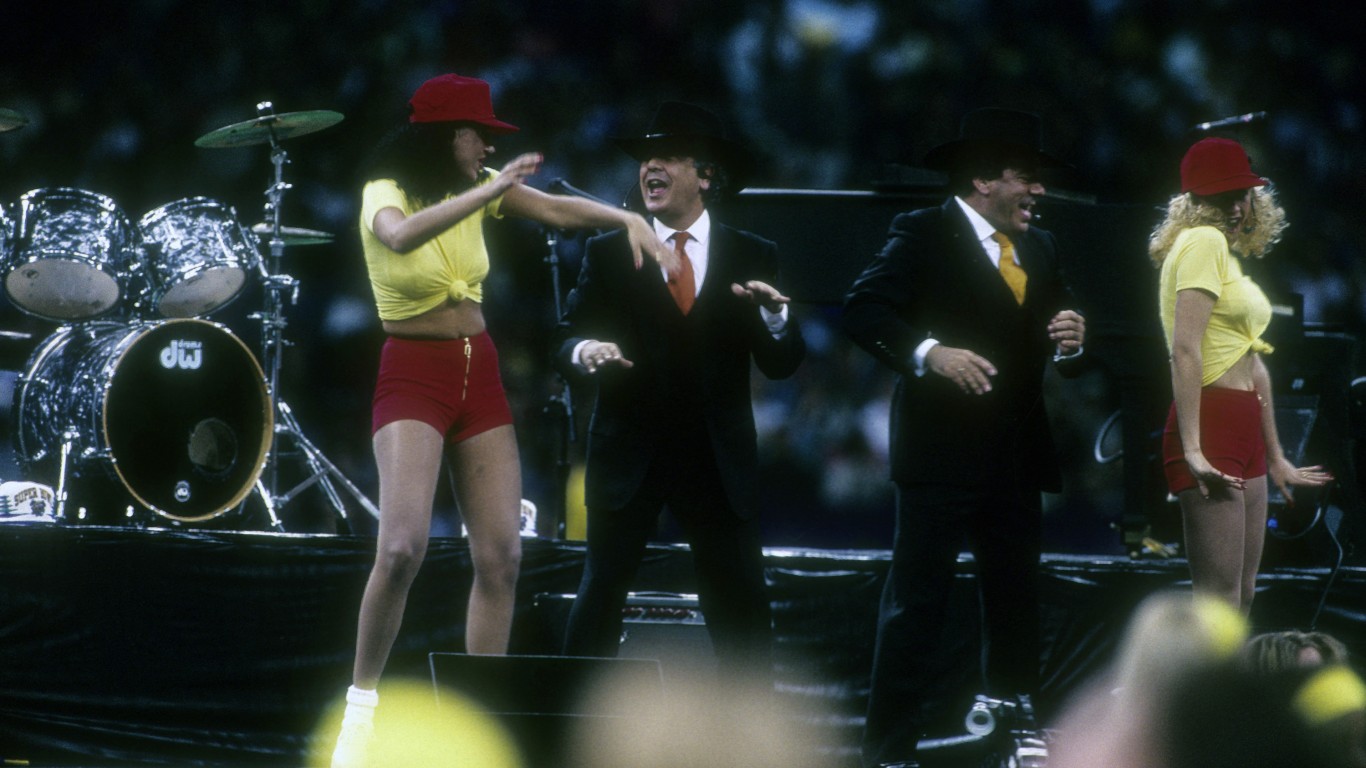
1996: The Macarena
In 1996, the Macarena was the dance everyone had memorized. “The Macarena” was performed by Spanish flamenco-pop duo Los Del Río, and was named for the daughter of one of the group’s members (though Macarena is also one of the 11 city quarters in Seville, the duo’s hometown). The song topped American charts for 14 weeks, and was subsequently interpreted by numerous other performers in both English and Spanish.

1990s: Fanny pack
2018 saw a resurgence of the Fanny Pack, but the ’80s and ’90s were the belt bag’s statement decades. The fanny pack was as much about fashion as it was about utility. The concept is prehistoric: a frozen body dating back 5,000 years was discovered wearing a waist bag not much different from a modern fanny pack.
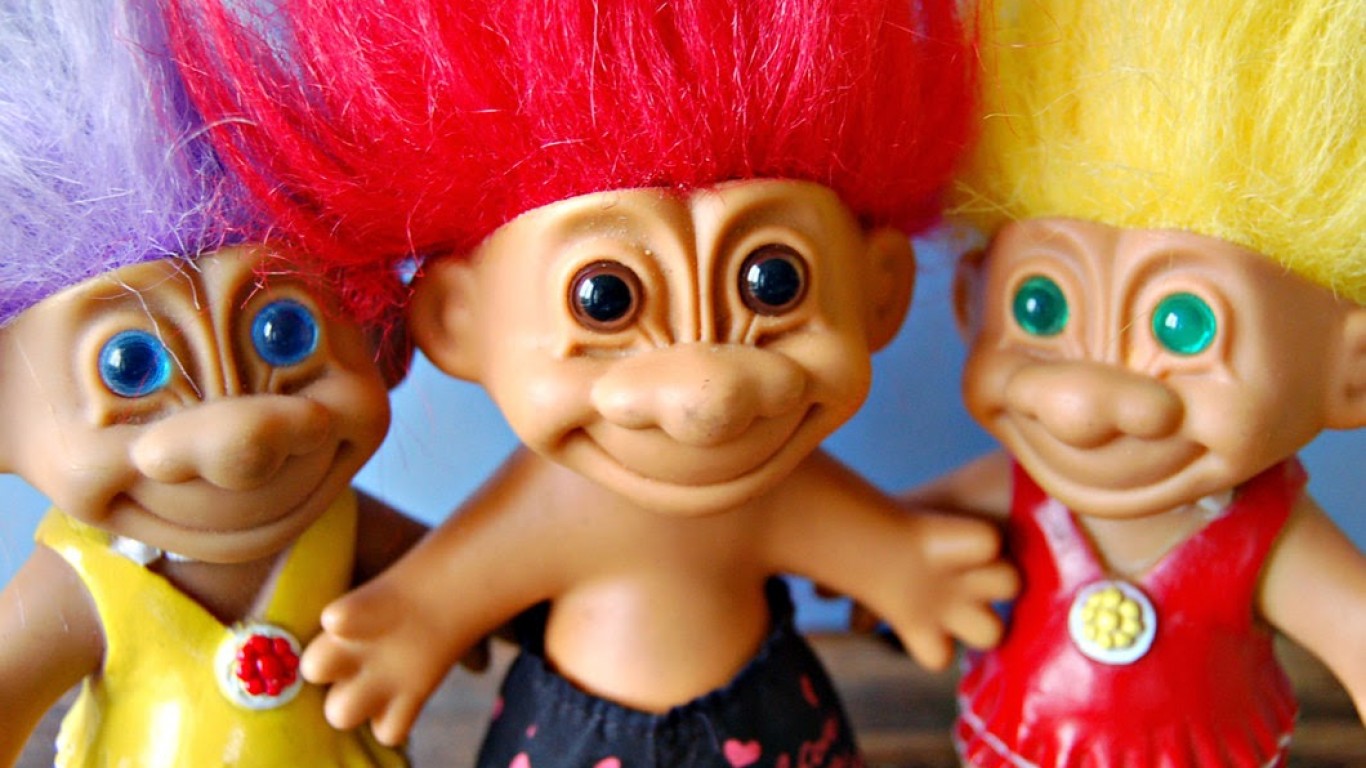
1990s: Troll dolls
If you grew up during the 1990s, you, your siblings, or your friends probably owned a Troll doll. While Troll dolls, which originated in Denmark, first became popular in the 1960s, they made a comeback in the ’90s. Troll dolls came with multiple hair colors, and some had speciality “gem” bellies. Troll dolls haven’t lost their pizazz; two feature films about animated “Trolls,” based on the toys, were released in 2016 and 2020.
[in-text-ad-2]

1997: Tamagotchi
Many ’90s parents saw their children get a taste of caregiving through the egg-shaped digital toy called the “Tamagotchi.” The game was created in Toshima City, Japan, by executive Akihiro Yokoi. The toy allowed children to virtually care for a pet-like entity that required round-the-clock care. Kids across the nation were obsessed with the Tamagotchi, and stores regularly sold out of their entire stock.
1997: Nokia’s Snake
The 2010s and ’20s are not the only decades that had people glued to their phones. In 1997, cell phones became increasingly popular, and while they lacked the bells and whistles of modern day smartphones, the phones of one of the leading manufacturers of the time, Nokia, featured an addictive game called Snake. This was a digital snake that could grow longer and longer, as long as the player maneuvered it so that it didn’t hit its own tail.
[in-text-ad]
1999: Heelys
Part-shoe, part-skate Heelys were a popular Y2K-era shoe that embraced the need for speed. Heelys had a wheel embedded in each heel, allowing the wearer to glide and walk at the same time. The shoe was created by a man named Roger Adams, who grew up around skating. Unfortunately, the shoe has come under fire by watchdog groups due to injury risk.
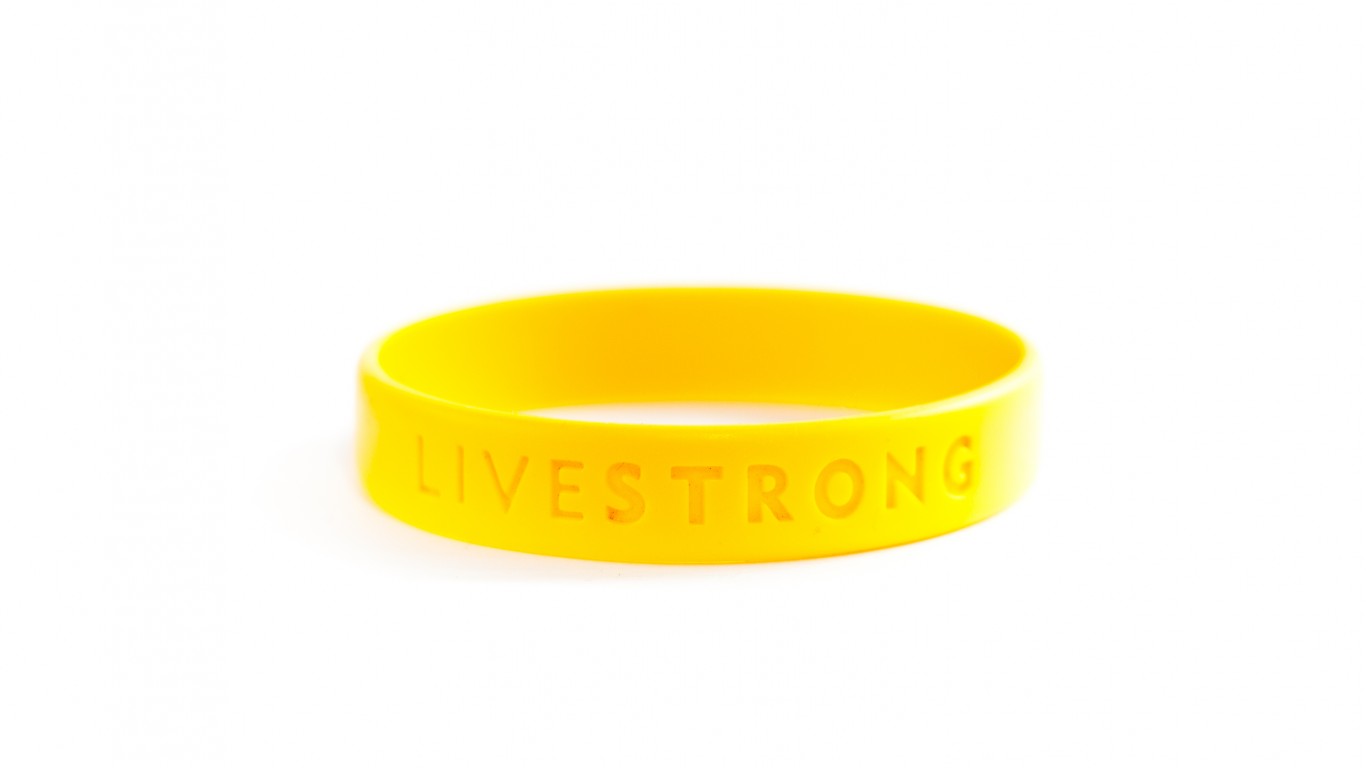
2000s: Livestrong Bracelets
Before Lance Armstrong was disgraced by a doping scandal, he was a respected road cyclist who had successfully battled cancer. Armstrong founded a support organization for cancer victims called the Livestrong Foundation, and as part of his efforts released a silicone bracelet with the word “Livestrong.” The bracelet could be purchased for $1, with profits going to the foundation. The yellow bracelet gained popularity beyond the cycling community, and raised millions of dollars for cancer charities.
2005: iPod Nano
Smaller than a Walkman, smaller than a regular iPod, the now-obsolete iPod Nano was a highly portable mp3 player released by Apple in 2005. Athletes and non-athletes alike saw its benefits, but its popularity was eclipsed by the smartphone’s all-in-one music-playing abilities.
[in-text-ad-2]

2005-2008: MySpace
Who was Tom, anyway? MySpace was one of the original rulers of social media. Tom Anderson, famously the “first friend” for all MySpace users, was one of MySpace’s co-creators. The website allowed users to share photos and music and leave comments, and became the most visited social media site from 2005 to 2008, when Facebook overtook it. MySpace (now rendered “Myspace”) has been redesigned numerous times and still exists, but it is a minor player on the scene.

2008: Quinoa
Quinoa (pronounced KEEN-wah) is a nutritious grain-like seed that has been a dietary staple in the Andes for thousands of years. Americans first took note of it in a big way after Oprah Winfrey publicized it as part of her 21-day “cleanse” diet in 2008.
[in-text-ad]

2008: Wii Fit
Playing video games may seem to be the opposite of working out, but Wii Fit combines gaming and exercising. Users link a balance board with their Nintendo Wii console and play games that can help with strength training, balance, and endurance.
2010: Sugar-free diets
Gwyneth Paltrow went sugar-free in 2010. Other famous folk who have given the diet a try include Kourtney Kardashian, Adele, Kate Hudson, and Alec Baldwin. This doesn’t just mean passing on the ice cream and drinking your coffee black. Serious sugar-free dieters give up not just sugar but also honey, maple syrup, and even some kinds of fruit (like bananas). The rationale? Not just the calories all that sweetness provides but the fact that sugar is actually a kind of poison – at least according to some doctors, nutritionists, and scientists.
2010: Shake Weight
The Shake Weight is a simple dumbbell that slides back and forth. It is designed to tone forearms and biceps, but it became so much more because of how silly and suggestive it looks. The Shake Weight’s infomercials were parodied on “Saturday Night Live” and “Ellen.”
[in-text-ad-2]

2010: Angry Birds
Angry Birds is a game that centers around a group of birds trying to protect their eggs. The game was released in 2010 and quickly went viral, accumulating many thousands of players and spawning Angry Birds merchandise and eventually two films.
2010s: Bone broth
Stock is a flavorful liquid made by simmering vegetables with meat or poultry bones, generally for three or four hours. Bone broth is similar, but simmered for much longer – up to 24 hours in some recipes – supposedly to extract every atom of nutritionally valuable elements from the bones. In the early 2010s, with the advent of the eat-like-a-caveman Paleo movement, bone broth got big. Broth bars opened around the country, and cans and freezer packs of it began showing up in supermarkets.
[in-text-ad]

2011: Kale
This “superfood” leafy green has been all but inescapable in recent years, sometimes as a cooked vegetable but also in the form of chips or in everything from hummus to pesto to pizza crust. Shout-outs from people like Dr. Oz and Gwyneth Paltrow (who demonstrated making kale chips on “Ellen” in 2011) helped push it into the mainstream, where it seems to still be lingering.
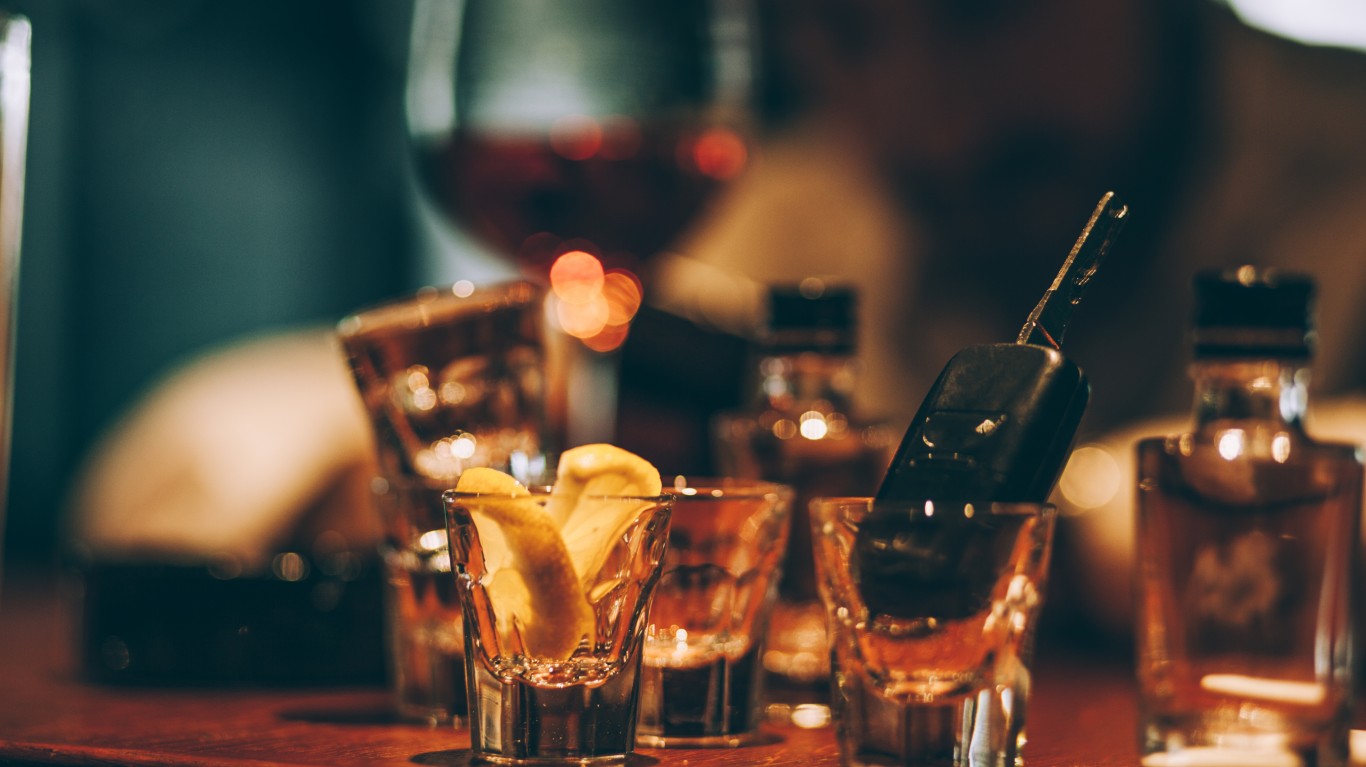
2012: Sober curiosity
It all started with the “Dry January” movement, launched in 2012 by the British alcohol awareness group Alcohol Concern. The movement migrated to the U.S. soon afterwards, and it is said that one in five Americans now participates. Dry July and Dry September have started gaining traction, too. As NPR put it, “[A]cross the U.S., …people are challenging each other to see what life is like without alcohol…” This doesn’t mean that people are turning wholesale into teetotalers, just that they’re experimenting with short breaks, which saves them money, improves their health, and inspires new ways to socialize.

2012: Gangnam Style
South Korean star Psy’s “Gangnam Style” was a hit, and its music video – heavily stylized, chock-full of bright colors, and showcasing a signature dance that captured global audiences – went viral, becoming the first video to reach one billion views on YouTube.
[in-text-ad-2]
2010s: The Cronut
Nobody knows for sure who invented the doughnut or the croissant, but there’s no doubt who first conceived of this pioneering mashup between the two: In 2013, French-born Manhattan-based pastry chef Dominique Ansel devised a way of making a doughnut with croissant dough. After a review on Grub Street, his bakery was thronged. The Cronut has been widely copied all over America, and has inspired such other mashups as Cruffins (croissant-muffins), Bonuts (biscuit-doughnuts), and the Cherpumple (three kinds of pie layered inside three kinds of cake).

2013: Avocado toast
Avocado toast was apparently invented at a restaurant called Bills in Sydney, Australia, in 1993, but it didn’t take off in America until 2013, when Gwyneth Paltrow included a recipe for it in her cookbook “It’s All Good.” Jessica Alba, Chrissy Teigen, Kate Beckinsale, and Drew Barrymore are among the many celebs who have since graced us with their own variations on the theme.
[in-text-ad]

2013: Purple vegetables
The color purple in fruits and vegetables is an indicator of a high content of phytonutrients –
compounds with antioxidant and anti-inflammatory properties, among other health benefits. That’s apparently the reason behind the increased popularity of things like purple carrots, sweet potatoes, and yams in supermarkets. There are plenty of other examples of items that are purple (or bluish-purple) in whole or in part, including turnips, beets, eggplant, kohlrabi, blackberries and blueberries, figs, grapes, and more.
2014: Ice bucket challenge
TikTok, YouTube, and other social media sites are no stranger to users doing off-the-wall challenges, but the ice bucket challenge was game-changing. To raise awareness of ALS – amyotrophic lateral sclerosis, popularly known as Lou Gehrig’s disease – participants dumped a bucket of ice on themselves, and nominated others to do the same or make a charitable donation to ALS research. The challenge went viral, with thousands, including celebrities and politicians, making videos of the cold, wet experience. The challenge brought in $115 million in donations for ALS research.
[in-text-ad-2]

2015: The Dress Debate
Rarely has an innocuous topic been as incendiary as the Dress Debate of 2015. After a disagreement over whether the dress shown in a photograph was white and gold or blue and black, a Scottish woman posted the image on Facebook. That was just the start of its spread across social media, and when it reached Tumblr, it got as many as 14,000 views per second. .Viewers could not grasp how the colors they saw plainly as one thing could look so different to someone else. There is no scientific consensus as to why perceptions are so different, but it has something to do with the way the brain perceives color and/or with the viewer’s expectations. What was the actual color of the dress? It was blue and black.

2015: Man buns
Few trends have been as controversial as the man bun. While some may ridicule the hairstyle, the man bun’s popularity grew in 2015, including among celebrities and models. The style looks exactly as its namesake suggests; hair gathered into a bun at the back, by a man. This look is not new: Soldiers in ancient China wore the style while at war, and it can be seen on the Terracotta Army statues from the third century B.C.
[in-text-ad]
2017: Apple cider vinegar
Chances are that if somebody told you that by swigging a little apple cider vinegar daily, you could lose weight, avoid diabetes, cure a sore throat, have cleaner teeth, and improve your skin and hair, you’d reach for a bottle – right? And that’s exactly what some of its exponents claim, though without much evidence.

2017: Fidget spinners
Fidget spinners were marketed as a toy for people with autism, ADHD, and anxiety, though no peer-reviewed studies supported the idea that it was beneficial. The toy, which rotates around a central gear in a mesmerizing fashion, gained popularity across the country. Unfortunately, fidget spinners also served as a distraction, with teachers confiscating the toys in many classrooms.

2018: Souping
Souping is basically juicing, but with more vegetables and often broth. Soups are well-known for their weight-loss benefits, because they let people fill up on fewer calories. Whole diets based around soup, increasingly popular, are considered healthier than juice diets because they typically include more dietary fiber than juices do.
[in-text-ad-2]

2018: Root-to-stem cooking
Root-to-stem or root-to-leaf cooking, inspired by nose-to-tail cuisine (which seeks to utilize virtually every part of animals slaughtered for food), means using the entire vegetable – peels, seeds, stems, leaves, sprouts, and just about everything else. Many restaurants now focus on this way of using produce, even drying some stems and leaves and such and turning them into powder. Considering that Americans waste about a pound of food per person every day, this is a welcome trend.
Are You Ahead, or Behind on Retirement? (sponsor)
If you’re one of the over 4 Million Americans set to retire this year, you may want to pay attention.
Finding a financial advisor who puts your interest first can be the difference between a rich retirement and barely getting by, and today it’s easier than ever. SmartAsset’s free tool matches you with up to three fiduciary financial advisors that serve your area in minutes. Each advisor has been carefully vetted, and must act in your best interests. Start your search now.
Don’t waste another minute; get started right here and help your retirement dreams become a retirement reality.
Thank you for reading! Have some feedback for us?
Contact the 24/7 Wall St. editorial team.

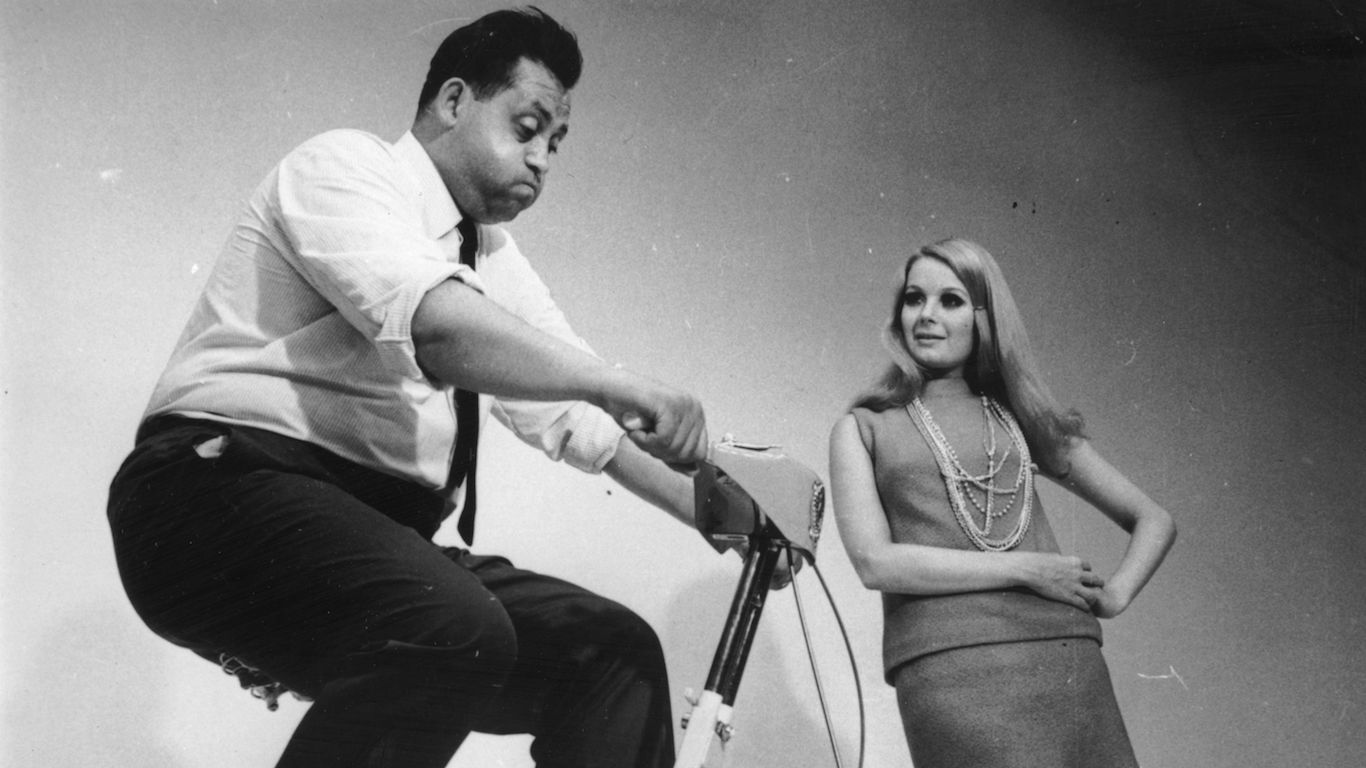 24/7 Wall St.
24/7 Wall St.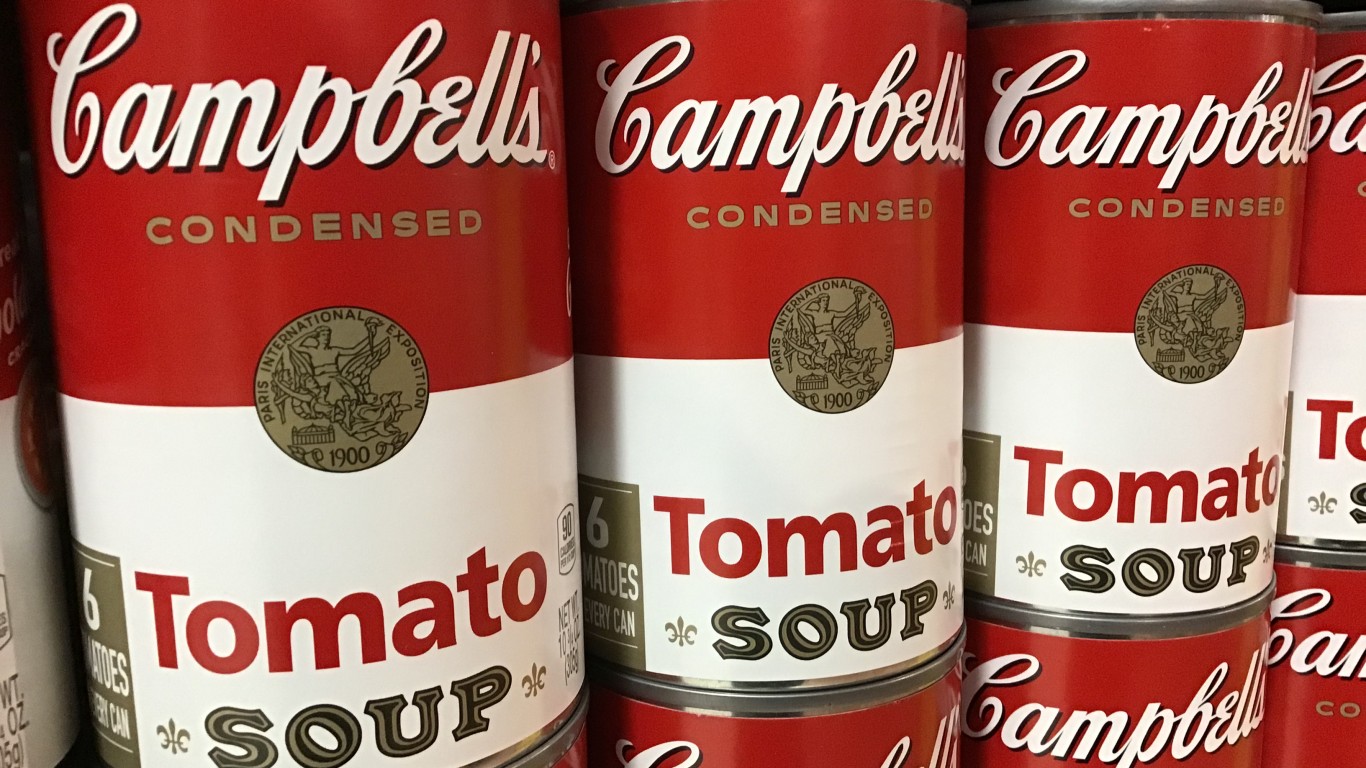
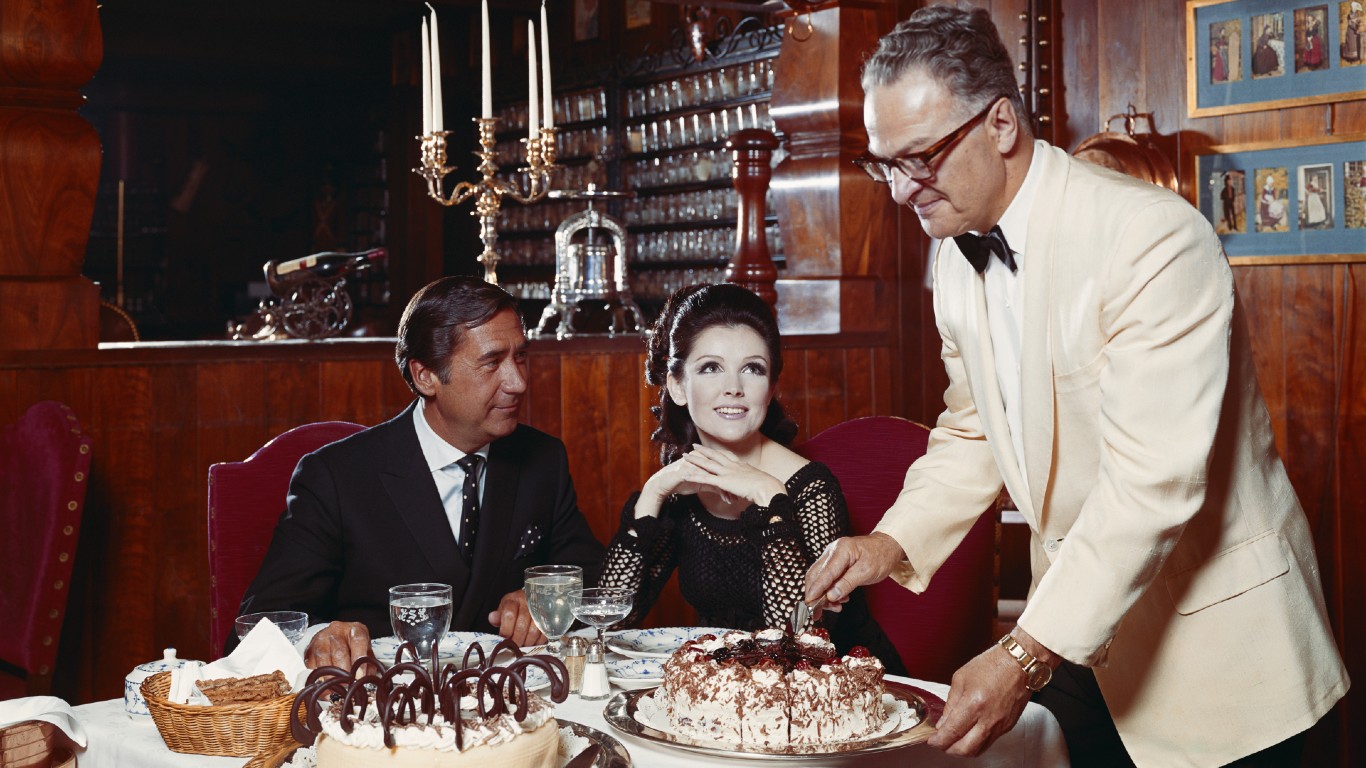 24/7 Wall St.
24/7 Wall St.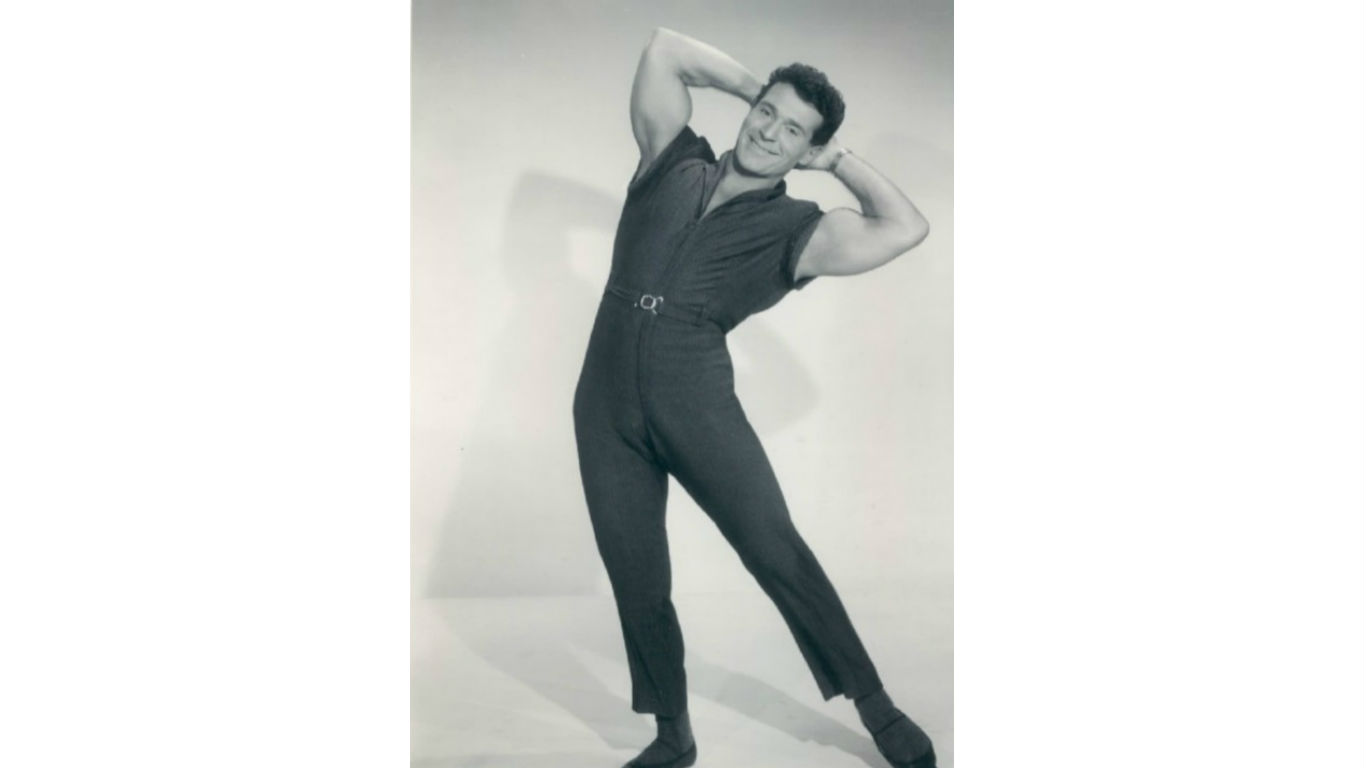
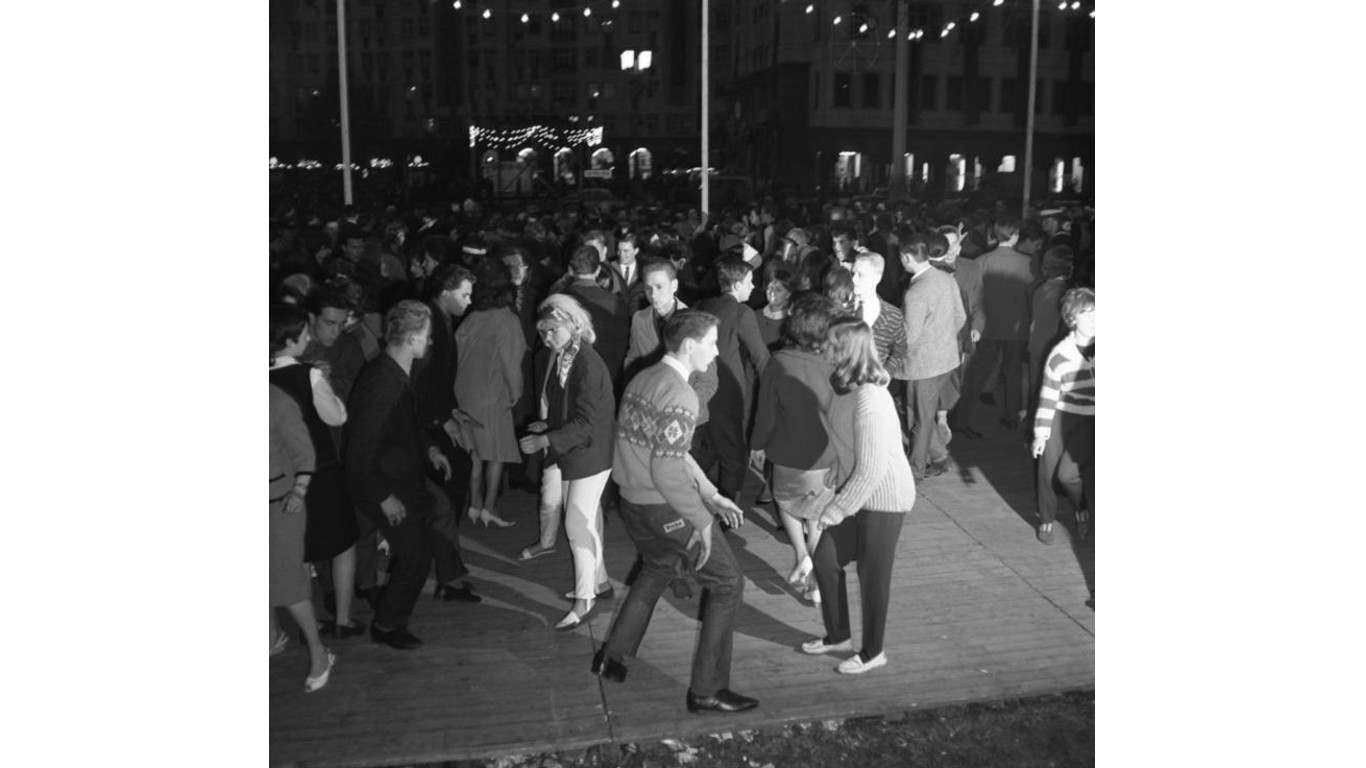
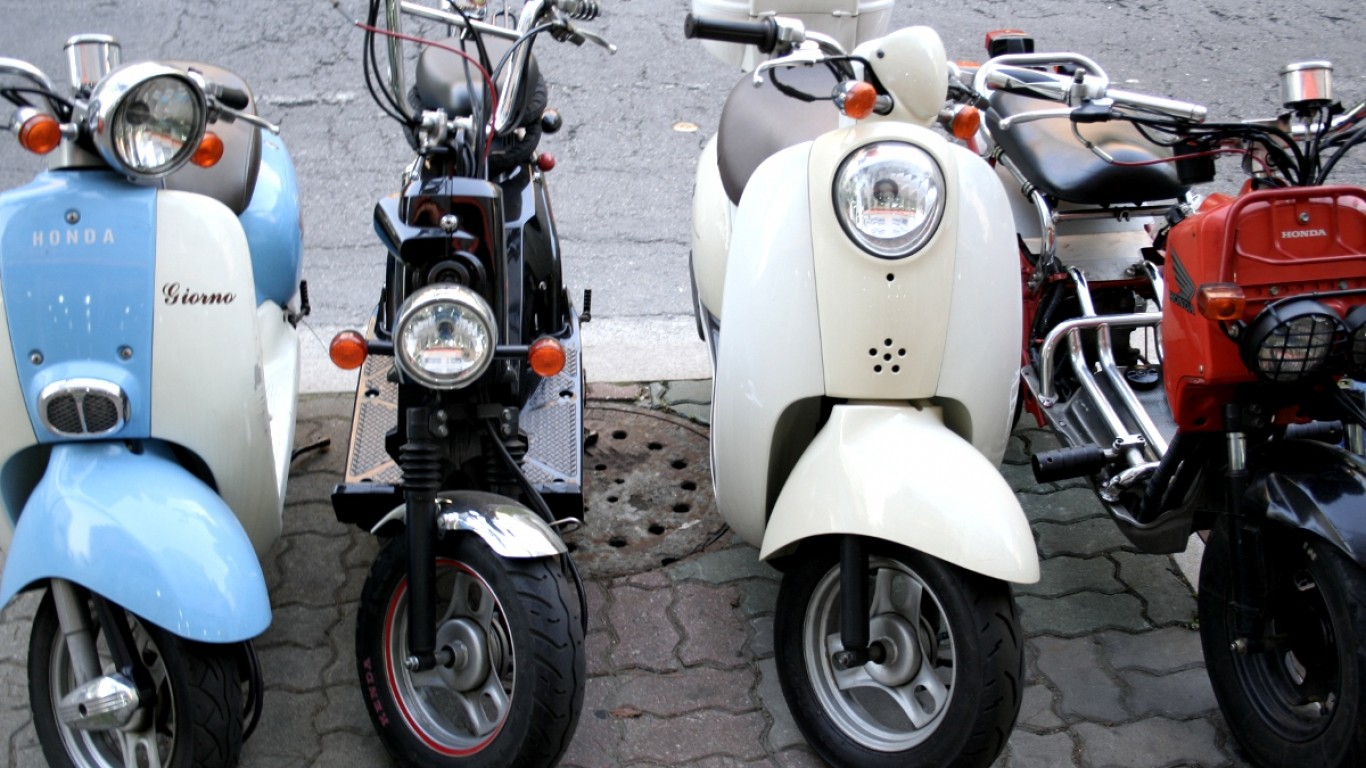
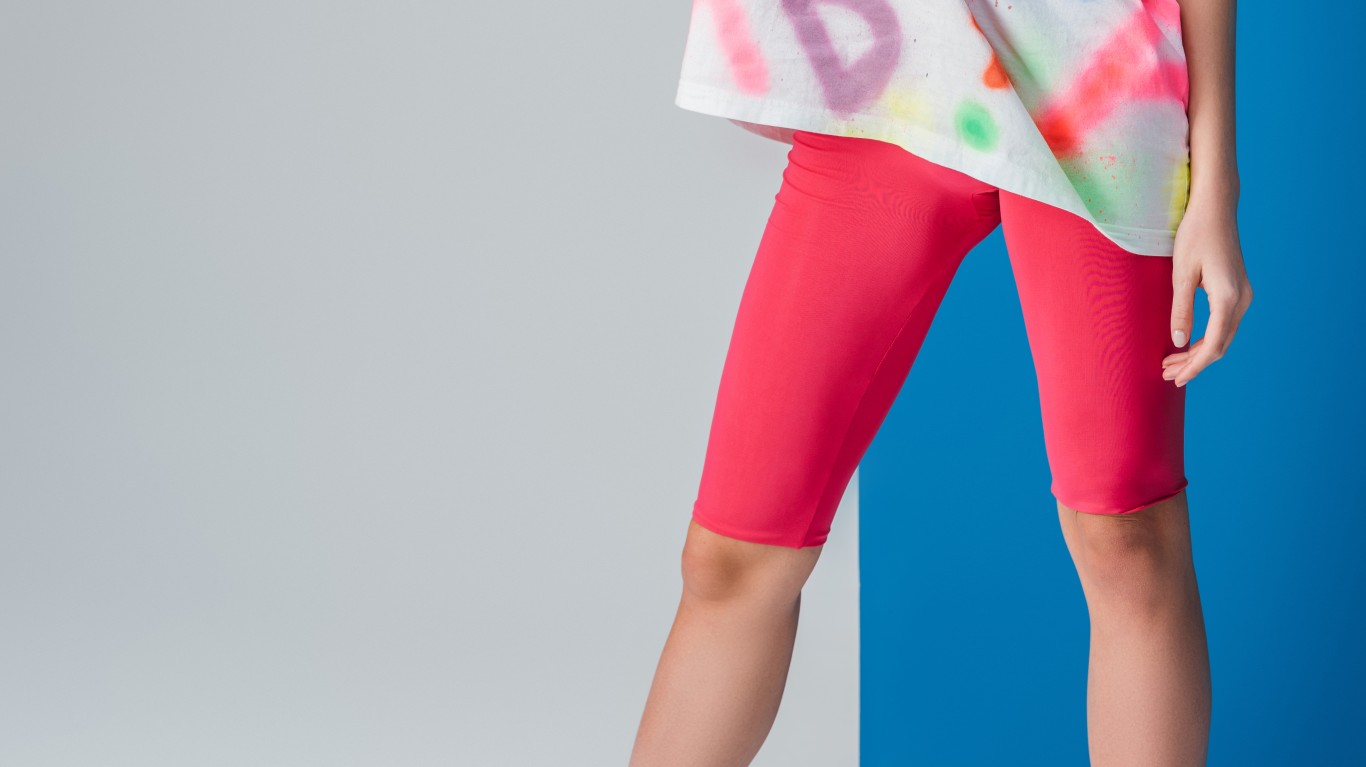 24/7 Wall St.
24/7 Wall St.
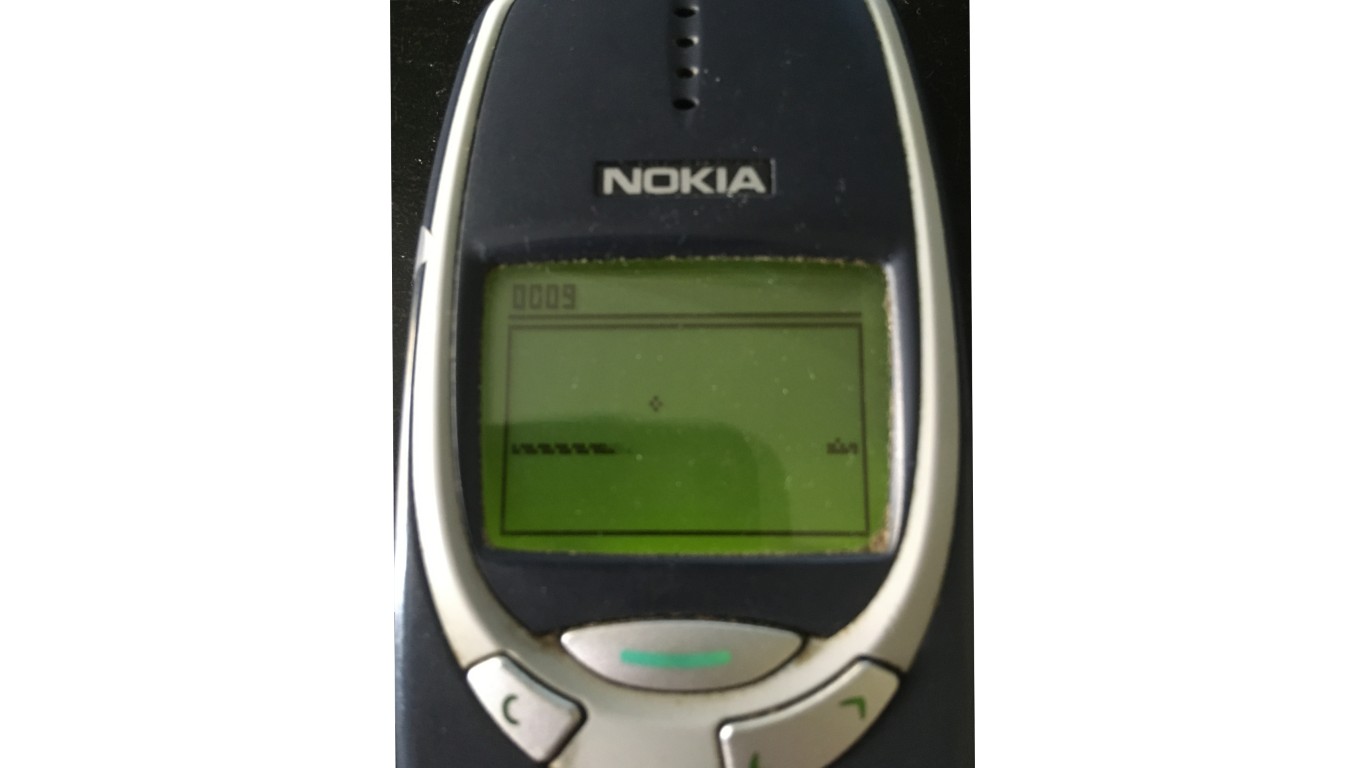
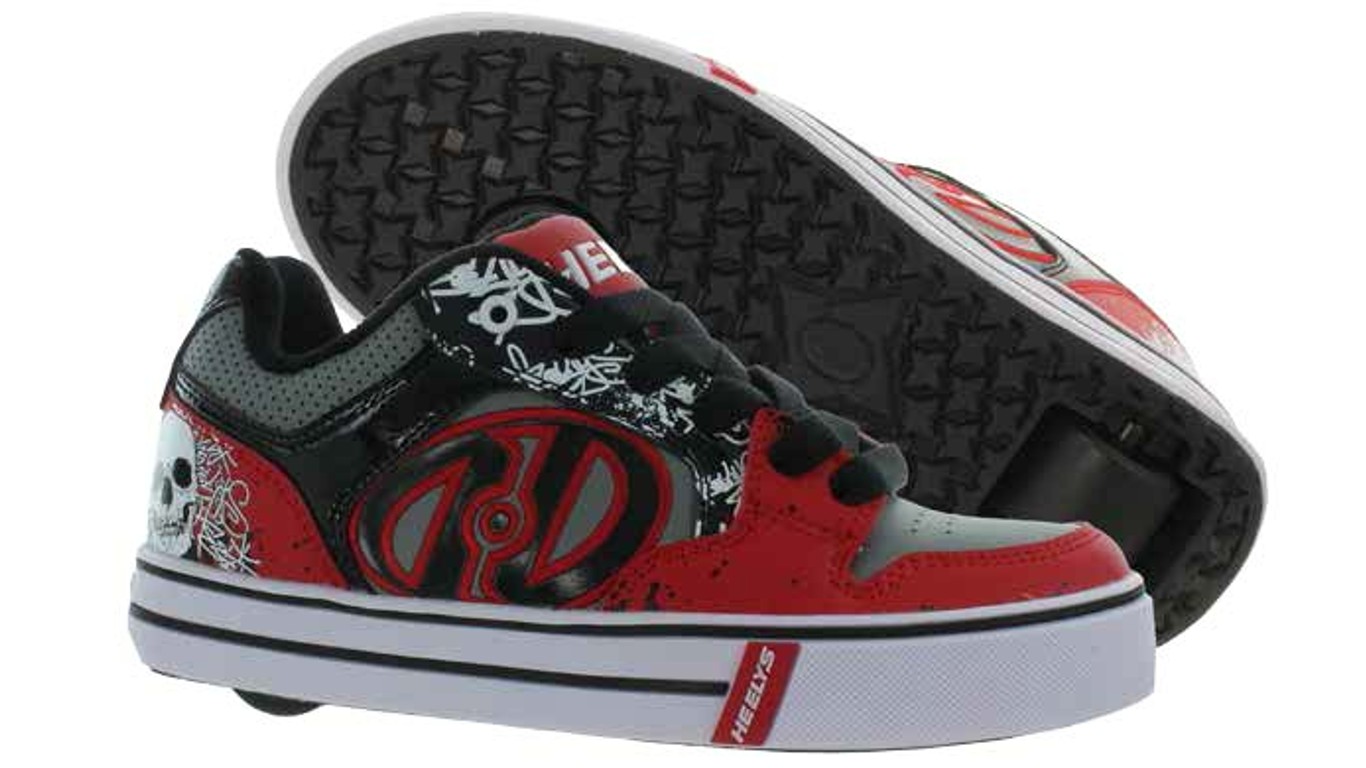
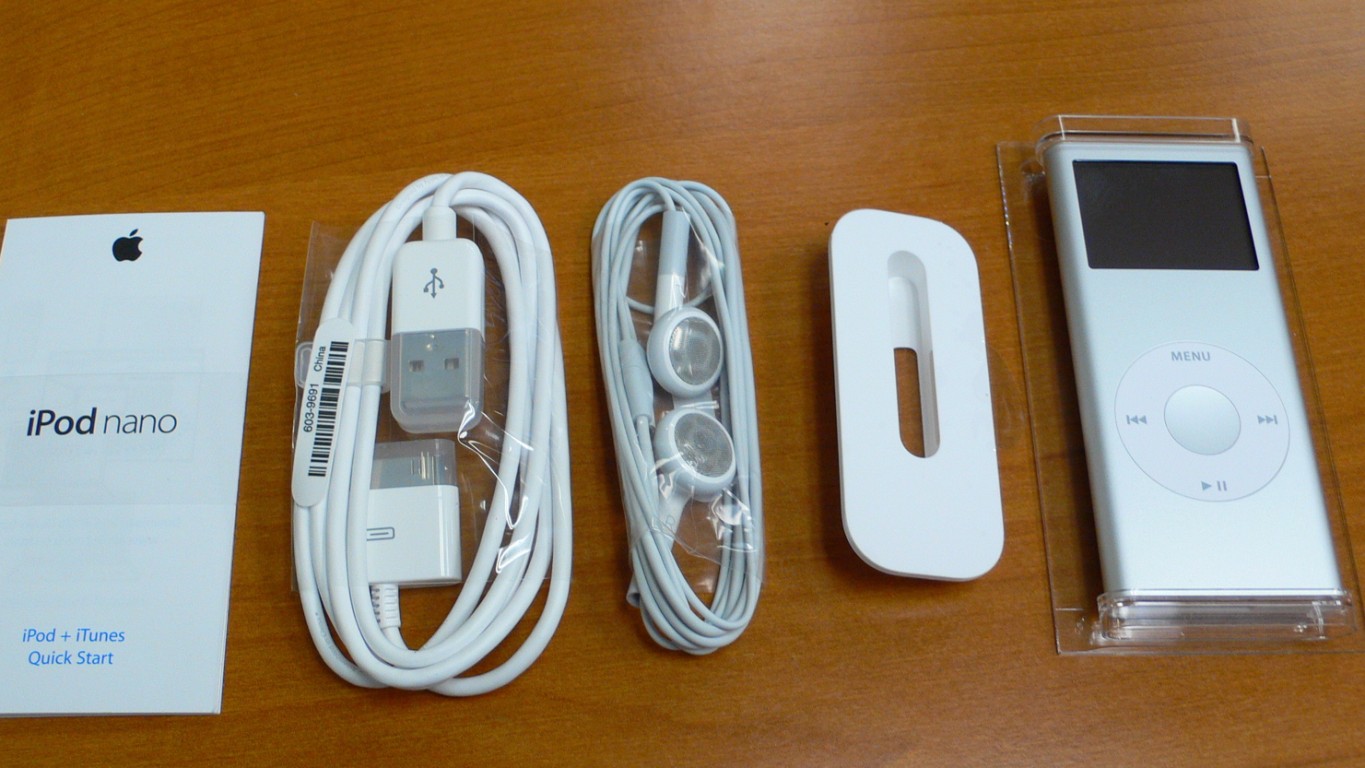
 24/7 Wall St.
24/7 Wall St.

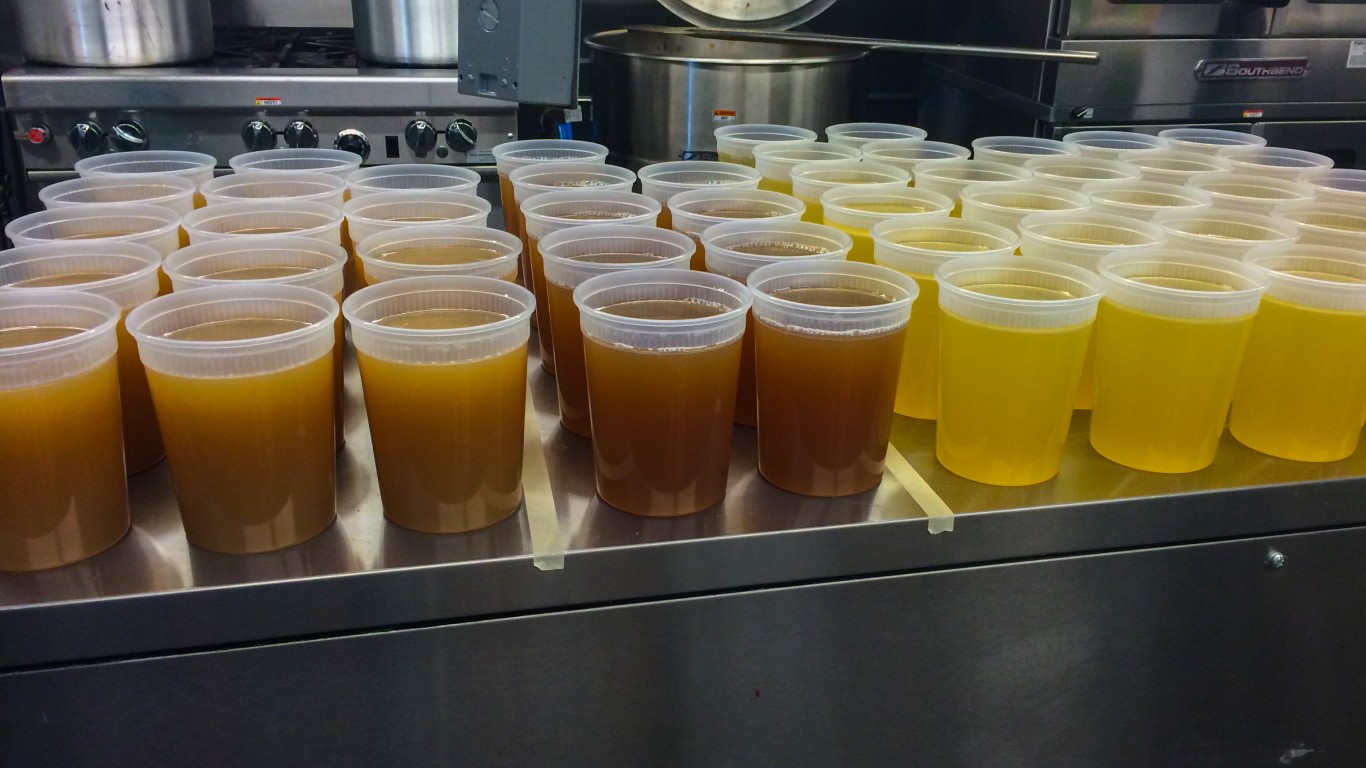
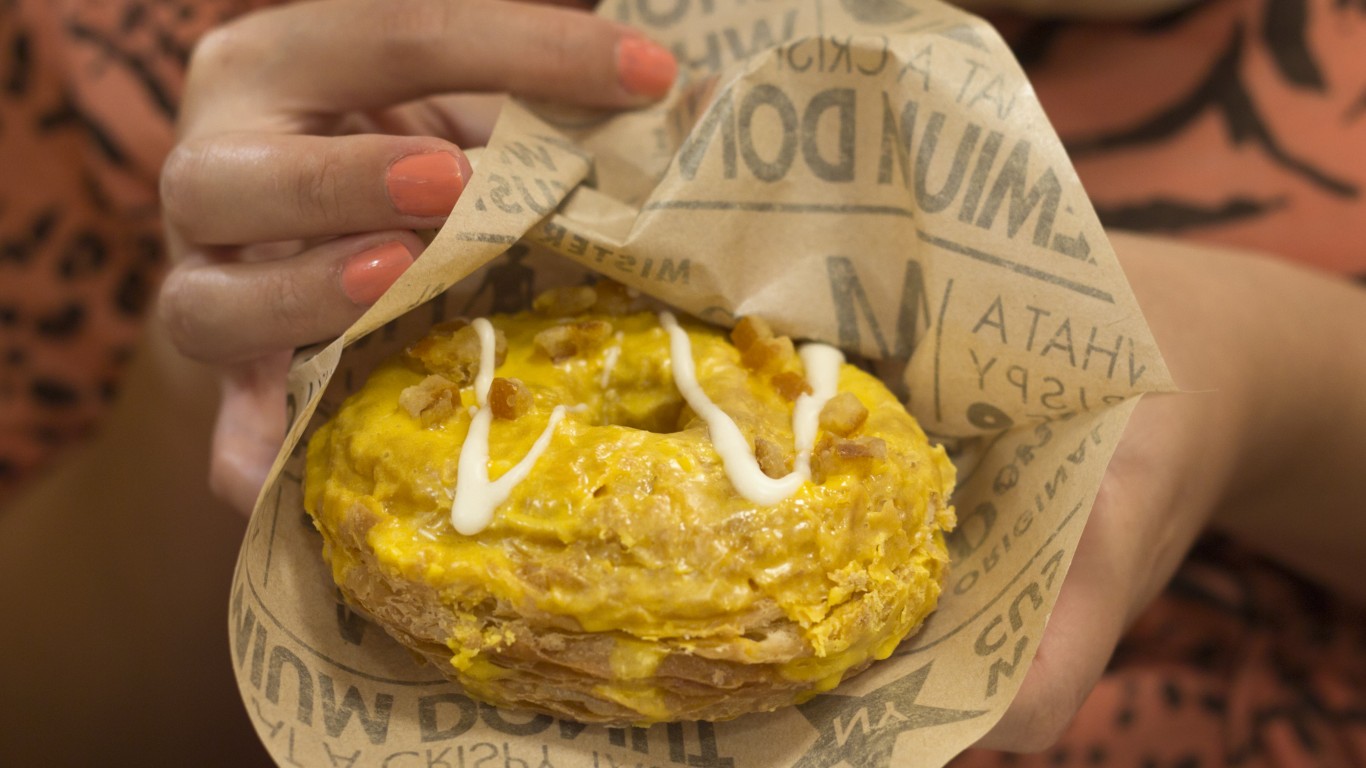
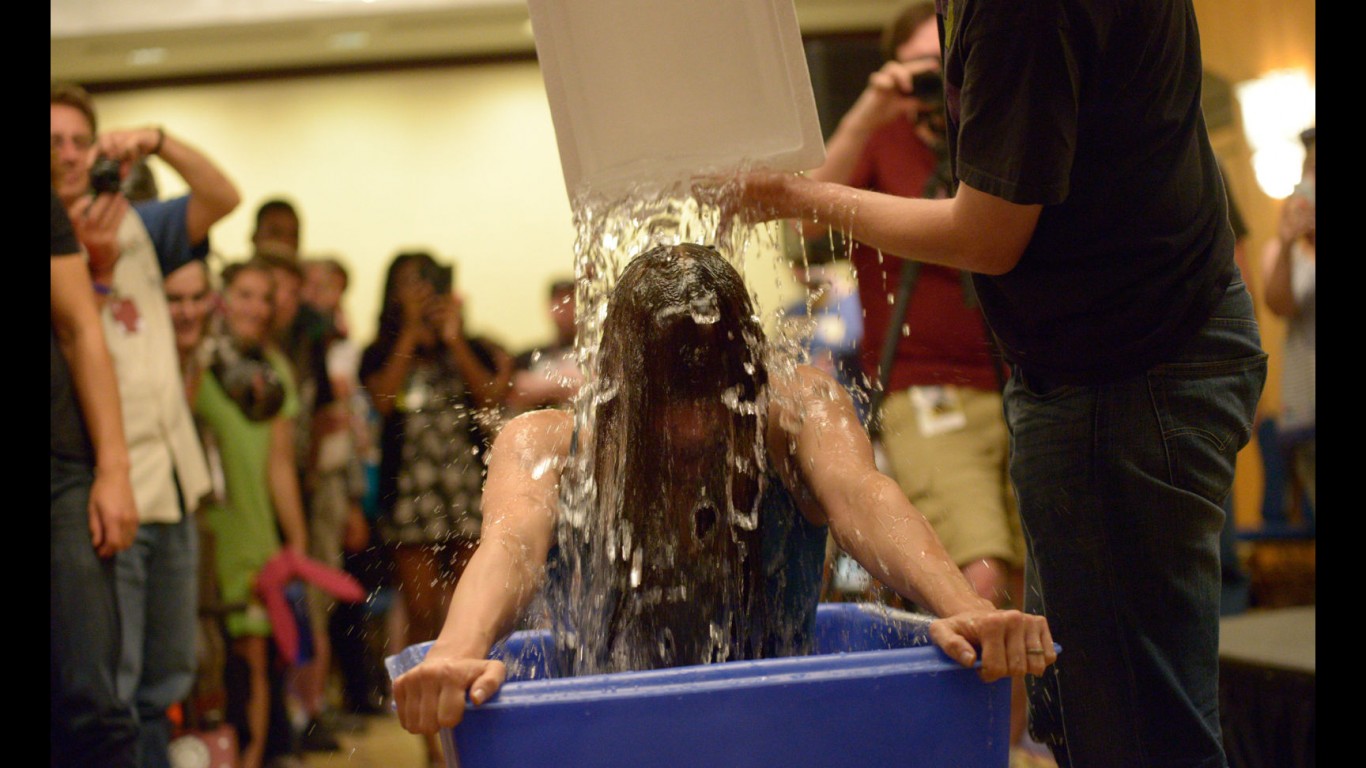
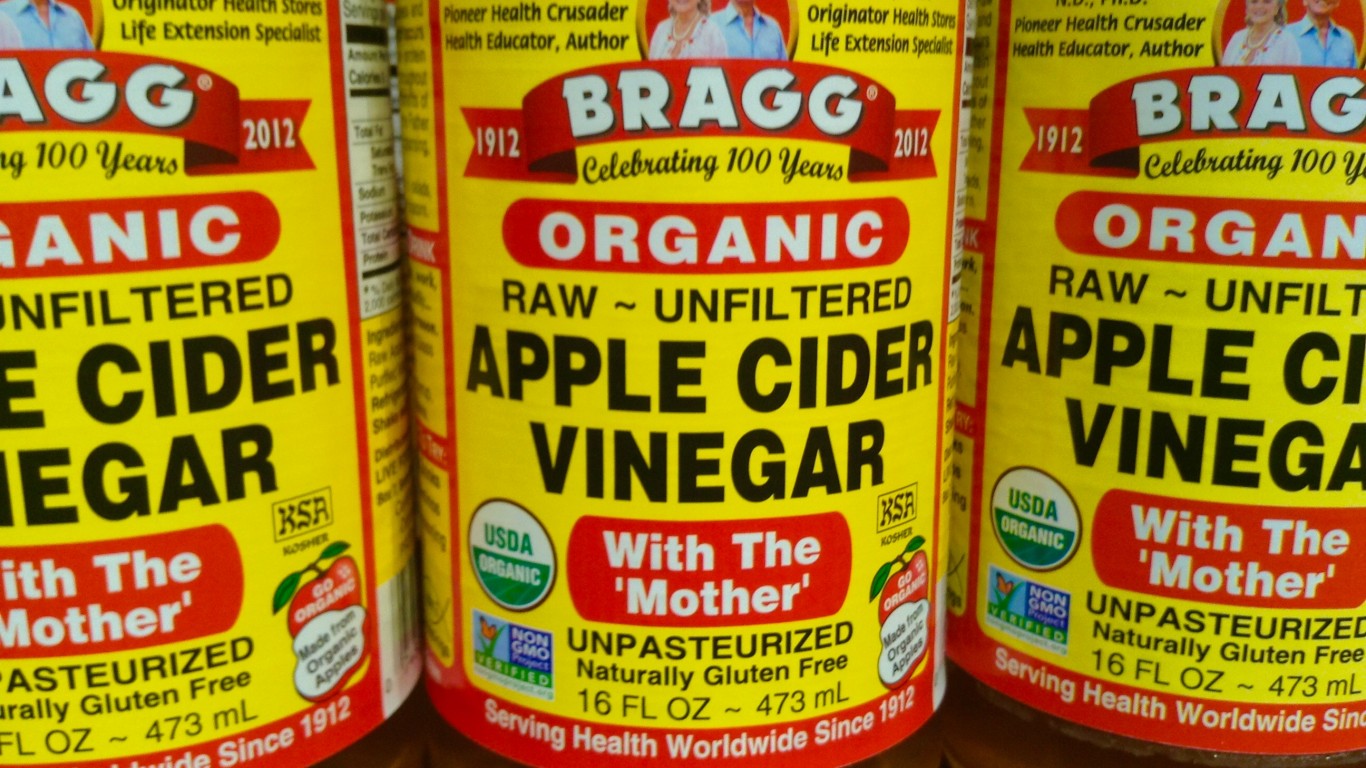
 24/7 Wall St.
24/7 Wall St.